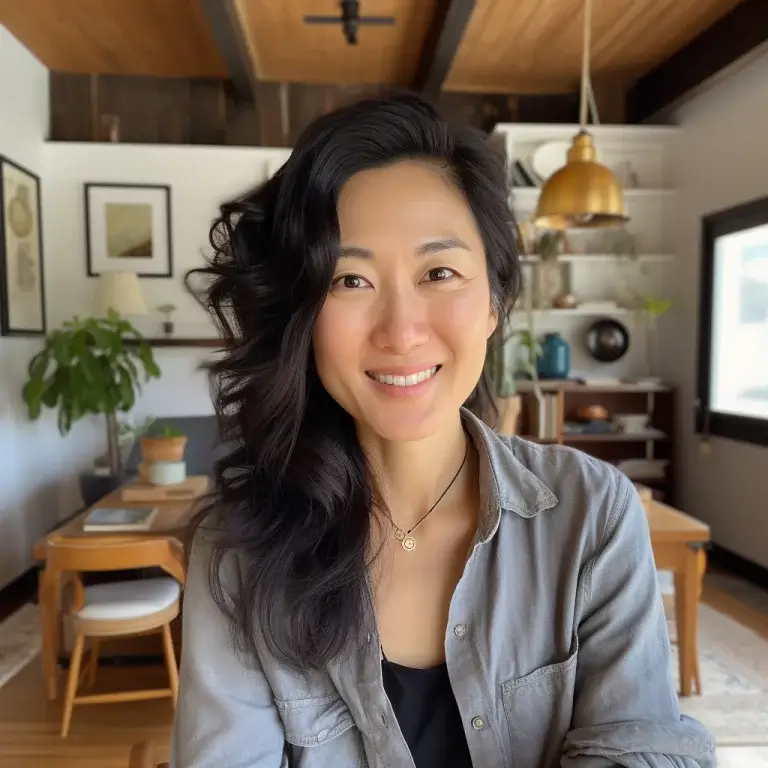Staring at roof designs and feeling lost about which style is best for your home? You’re not alone. Choosing the right roof is a big deal.
Your roof doesn’t just keep rain out – it shapes how your house looks and handles weather. The right style makes your home stand out and can save on energy bills.
Before picking, know your options. Some roofs work better in snow, others in wind. Some are cheap to build but costly to fix. Others look great but aren’t right for your climate.
In this guide, we’ll show you the most popular roof styles, helping you figure out what fits you best.
Different Types of Roof Styles
Roof styles can be classified by their shape, function, and regional popularity across America.
Understanding these categories helps homeowners choose designs that balance visual appeal with practical considerations like climate adaptation and space utilization.
From the most common gable roofs to rare architectural features like conical towers, each style solves specific problems while creating a distinctive aesthetic for your home.
1. Gable Roof
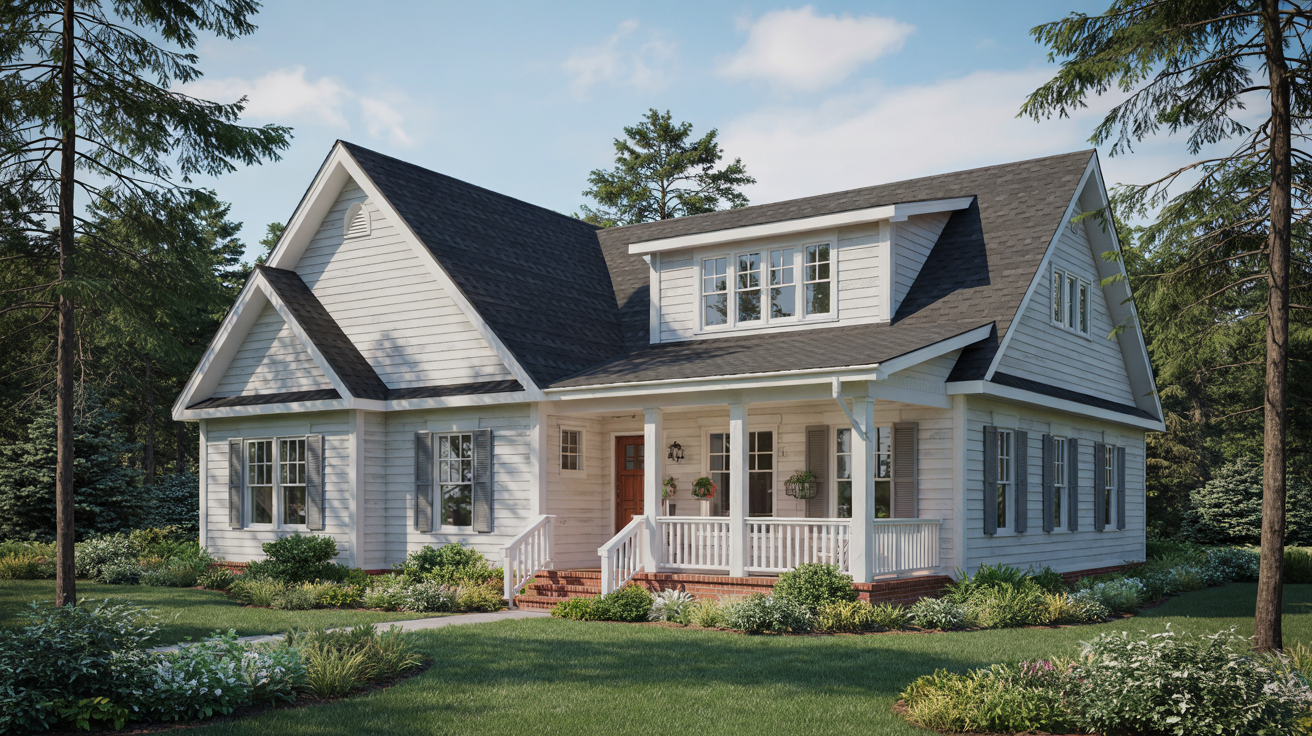
The gable roof is the most common style in America, known for its triangle shape. You’ll see this style in many suburbs because it’s simple to build and costs less than fancier options. Rain and snow slide off easily, making it great for wet climates.
If you want a classic look that works in most places, the gable roof is a safe choice.
Drive through any neighborhood from Maine to California and you’ll notice gable roofs dominating the landscape of suburban developments.
2. Hip Roof
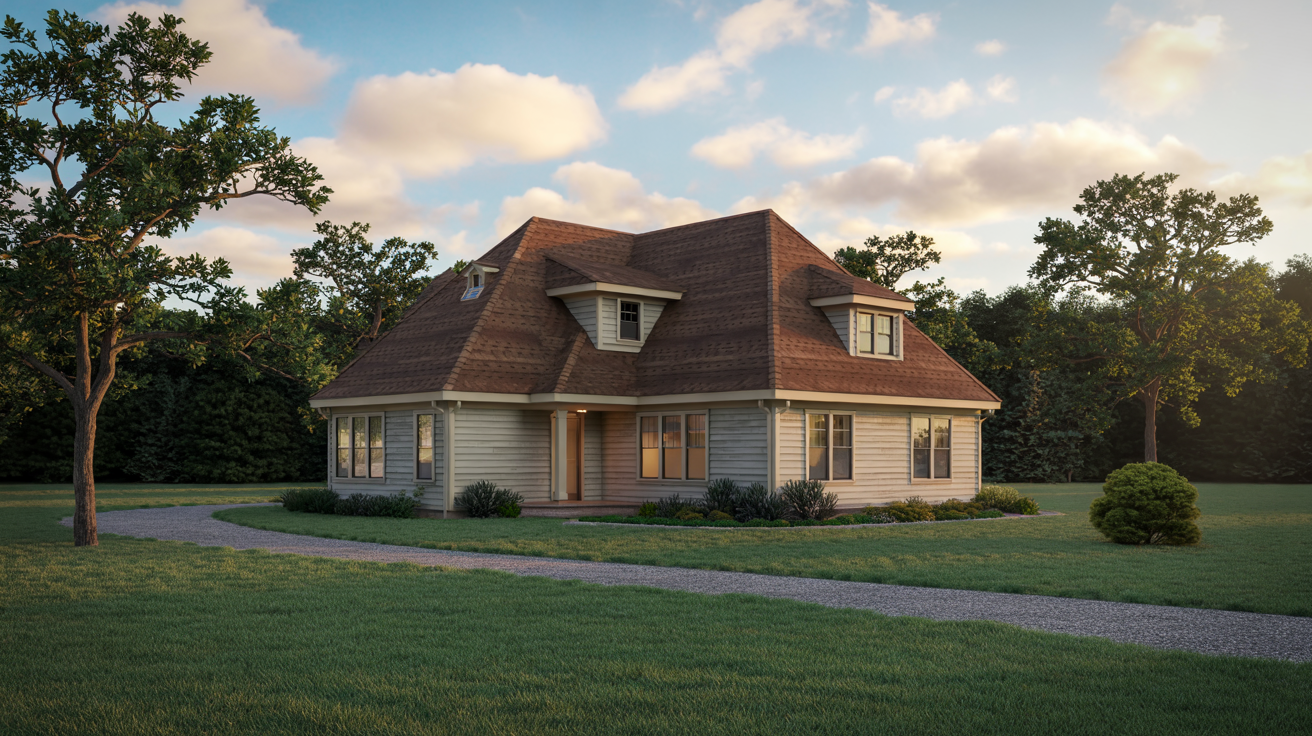
Hip roofs slope on all four sides, coming together at the top to form a ridge. These roofs stand up well to high winds and storms, making them perfect for coastal areas and hurricane zones.
They cost more than gable roofs but offer better protection in harsh weather. Many insurance companies even offer lower rates for homes with hip roofs in storm-prone regions.
Throughout Florida, the Gulf Coast, and the Carolinas, hip roofs reign supreme as the go-to choice for weather-resistant home design.
3. Flat Roof
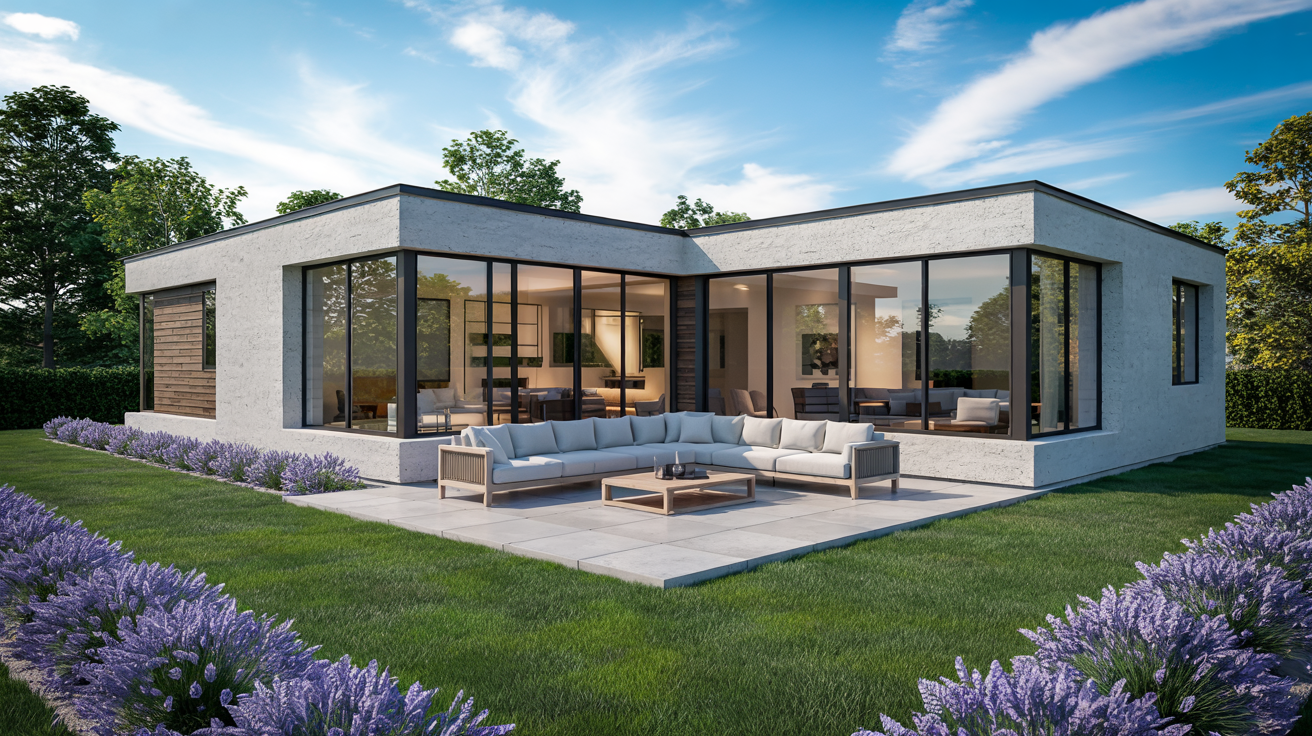
Flat roofs aren’t completely flat but have a slight slope to drain water. This style is common in cities and modern homes where the roof can serve as extra living space.
You can add a rooftop garden, solar panels, or outdoor seating on these roofs. Flat roofs cost less to build but may need more care to prevent leaks over time.
The skylines of Arizona, New Mexico, and urban centers like Chicago showcase countless flat-roofed buildings taking advantage of this practical design.
4. Combination Roof
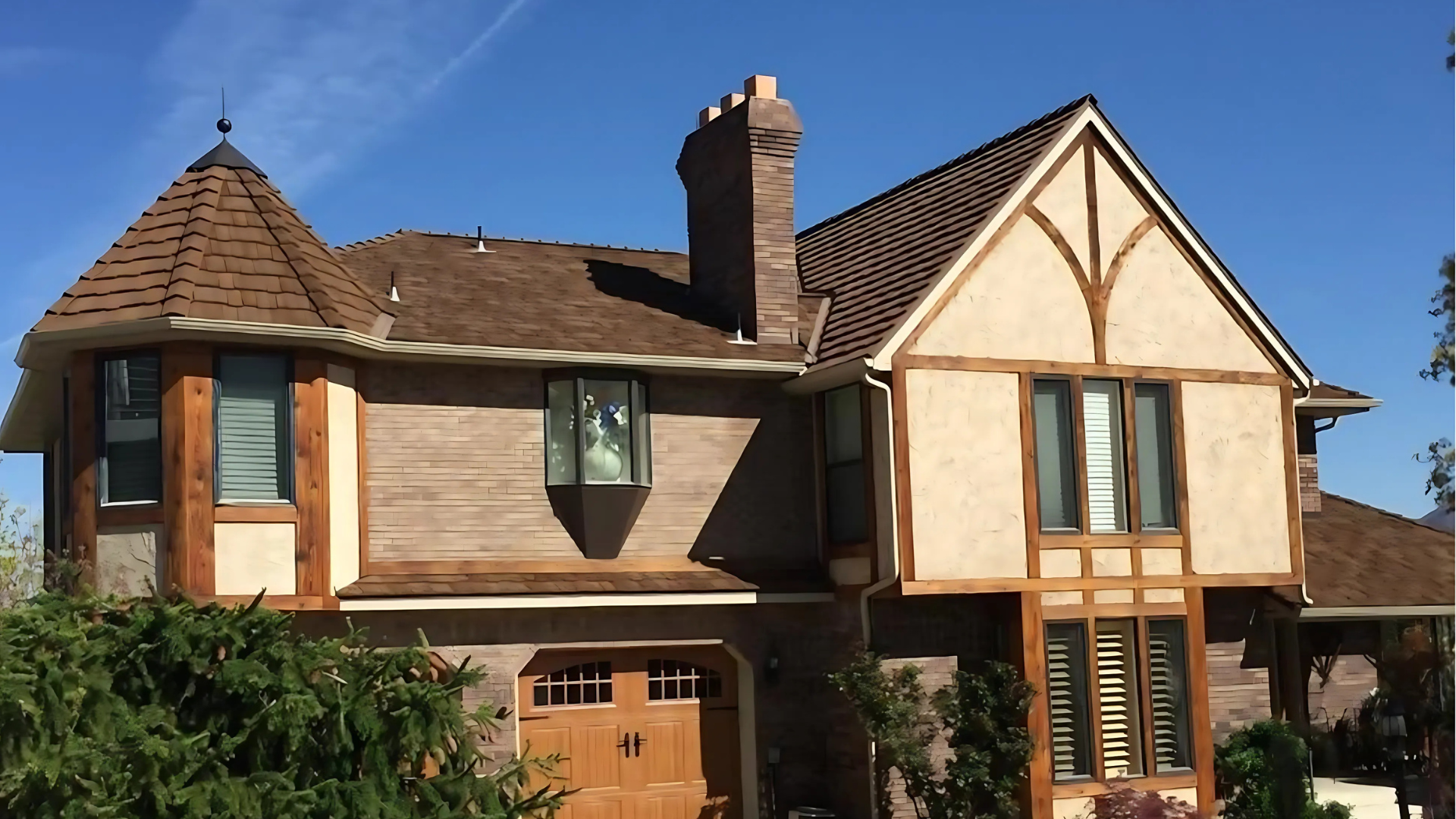
Combination roofs mix two or more roof styles to cover homes with complex layouts. These roofs can match any home design and add unique character to custom houses.
While they cost more to build and maintain, they solve problems that single-style roofs can’t handle. Homes with multiple wings or unusual shapes often need this flexible roof style.
Upscale neighborhoods across the nation’s wealthier suburbs feature combination roofs on grand homes where standard designs simply won’t suffice.
5. Shed Roof
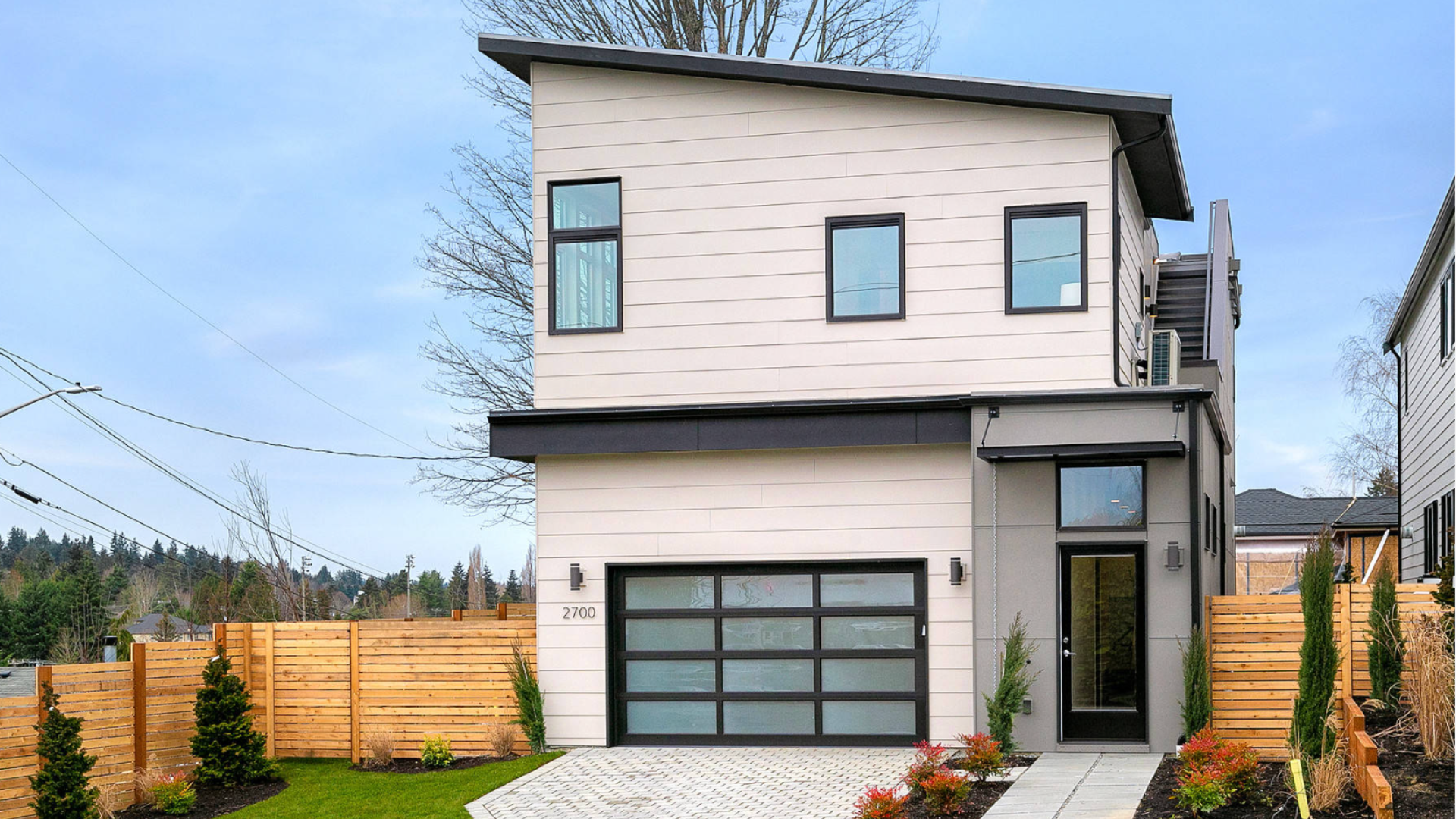
Shed roofs slope in just one direction, like half of a gable roof. This simple design works well for modern homes and room additions where you want to bring in more light.
Water runs off quickly, and the slant allows for taller walls with bigger windows. Shed roofs give homes a clean, current look while keeping costs down.
Historic districts in Boston, New Orleans, and San Francisco boast beautiful row houses topped with these elegant mansard roofs that harken back to their European roots.
6. Mansard Roof
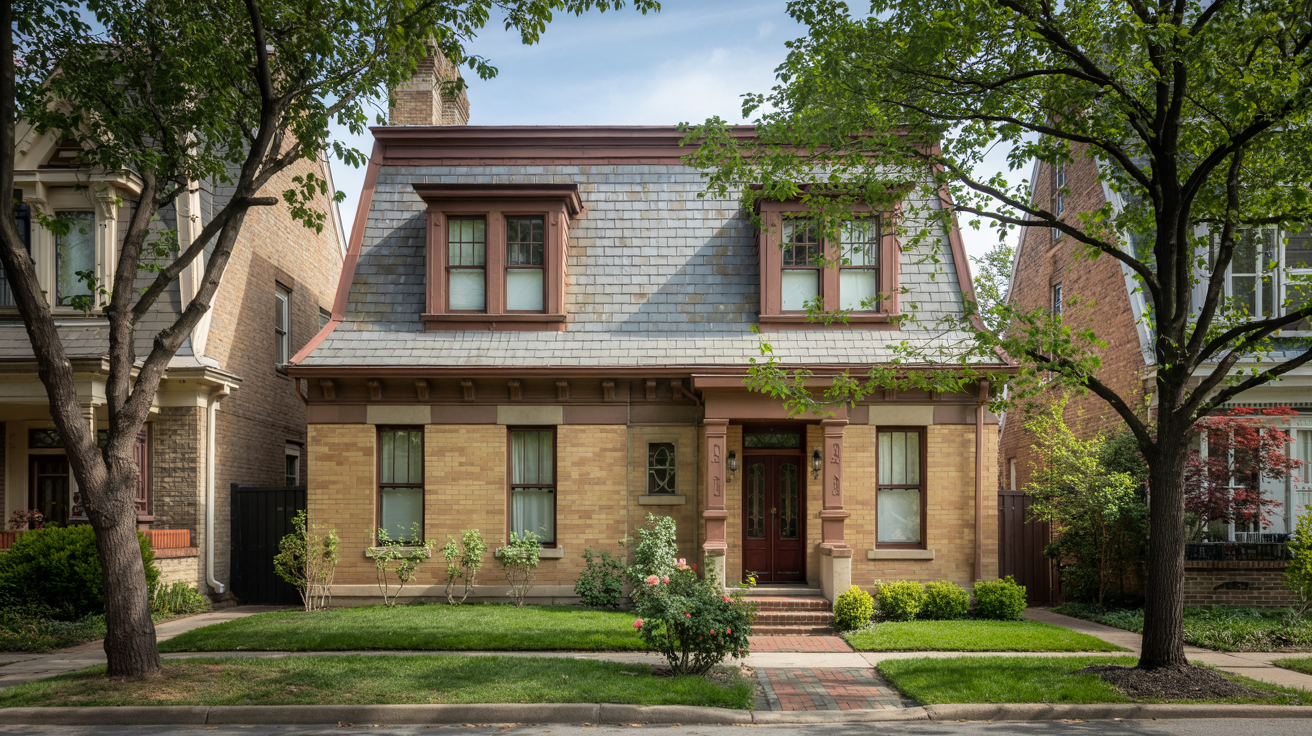
Mansard roofs have four sides with a double slope on each side, with the lower slope steeper than the upper one. This French-inspired style creates extra living space in the attic and adds a touch of class to any home.
The steep lower slope can be covered with different materials to create a unique look. Homeowners choose mansard roofs when they want to add future upper-floor space without changing the roof.
The rural landscapes of Pennsylvania, New York, and throughout New England are dotted with classic gambrel-roofed barns and charming colonial homes that showcase this practical design.
7. Gambrel Roof
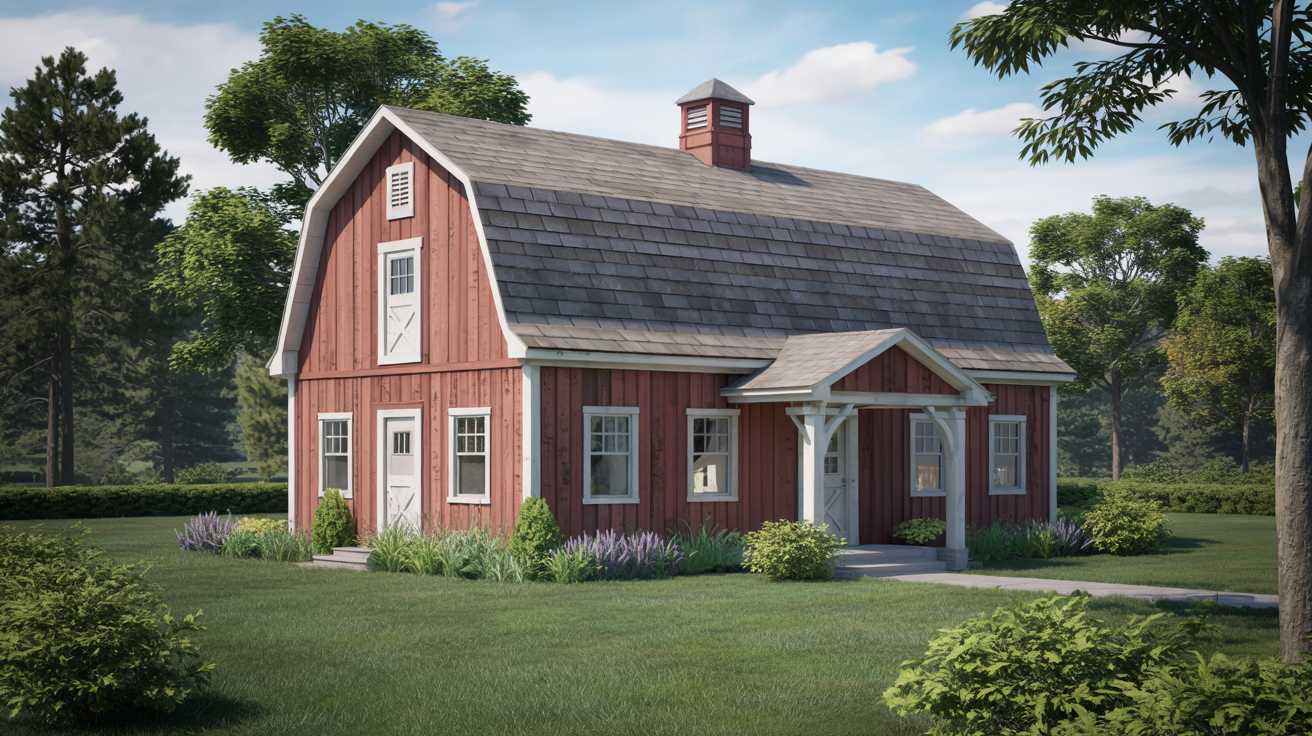
The gambrel roof looks like a barn roof with two slopes on each side, with the lower slope steeper than the upper. This style gives you maximum attic space and brings country charm to homes.
Gambrels are common on farmhouses, Dutch Colonial homes, and modern country-style houses. The extra space they create makes them perfect for homes that need storage or room to grow.
Along the winding roads of Massachusetts, Connecticut, and Maine, you’ll discover authentic saltbox homes that have weathered centuries of harsh northern winters.
8. Saltbox Roof
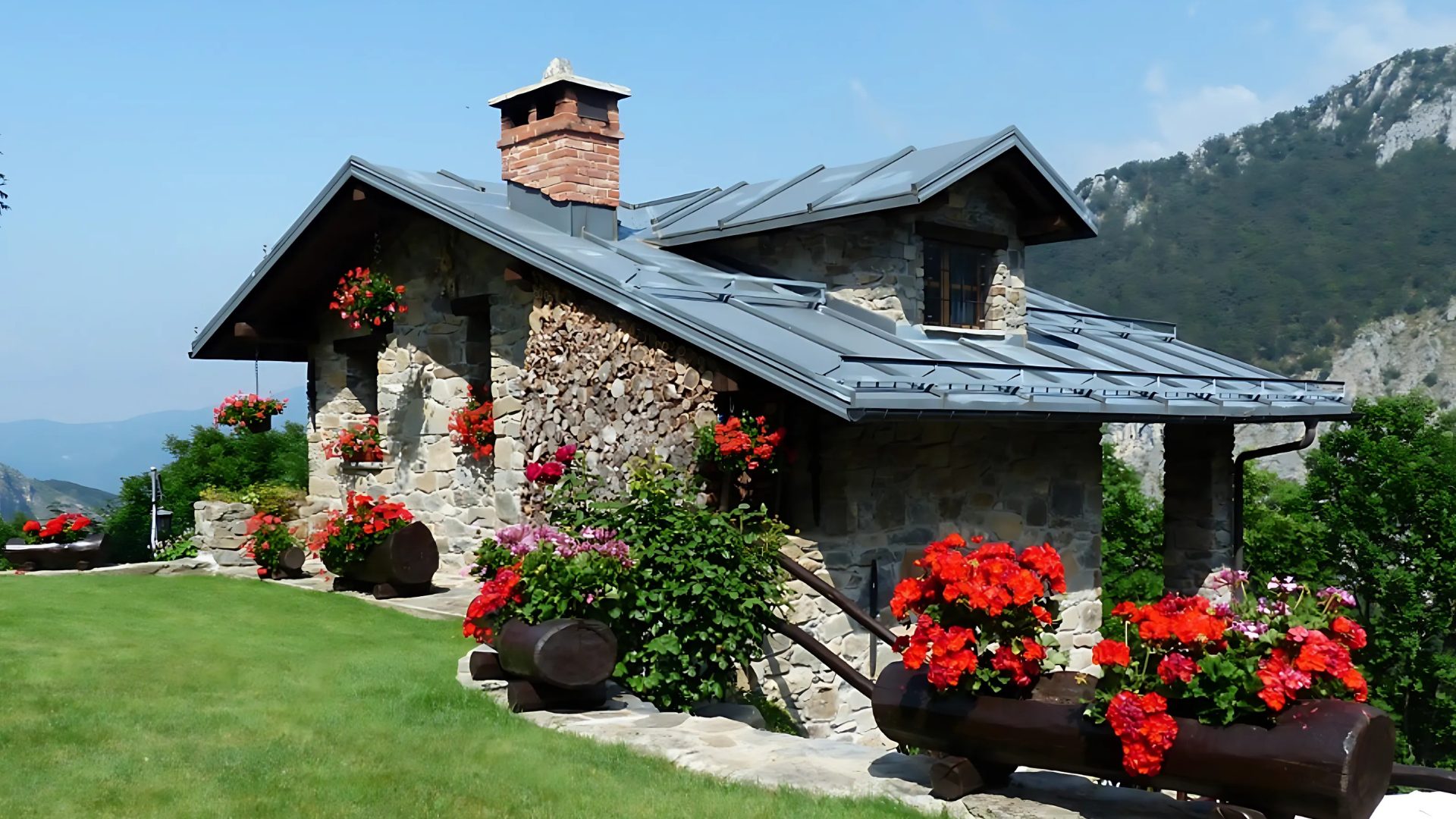
Saltbox roofs feature an asymmetrical design with one long, low slope in the back and a shorter, steeper slope in front. This unique style began in New England, where it helped shed heavy snow loads while adding space.
The unusual shape stands out in any neighborhood and gives homes historical character.
Saltbox roofs work best in areas with cold winters where snow buildup is a concern.
9. Dutch Gable Roof
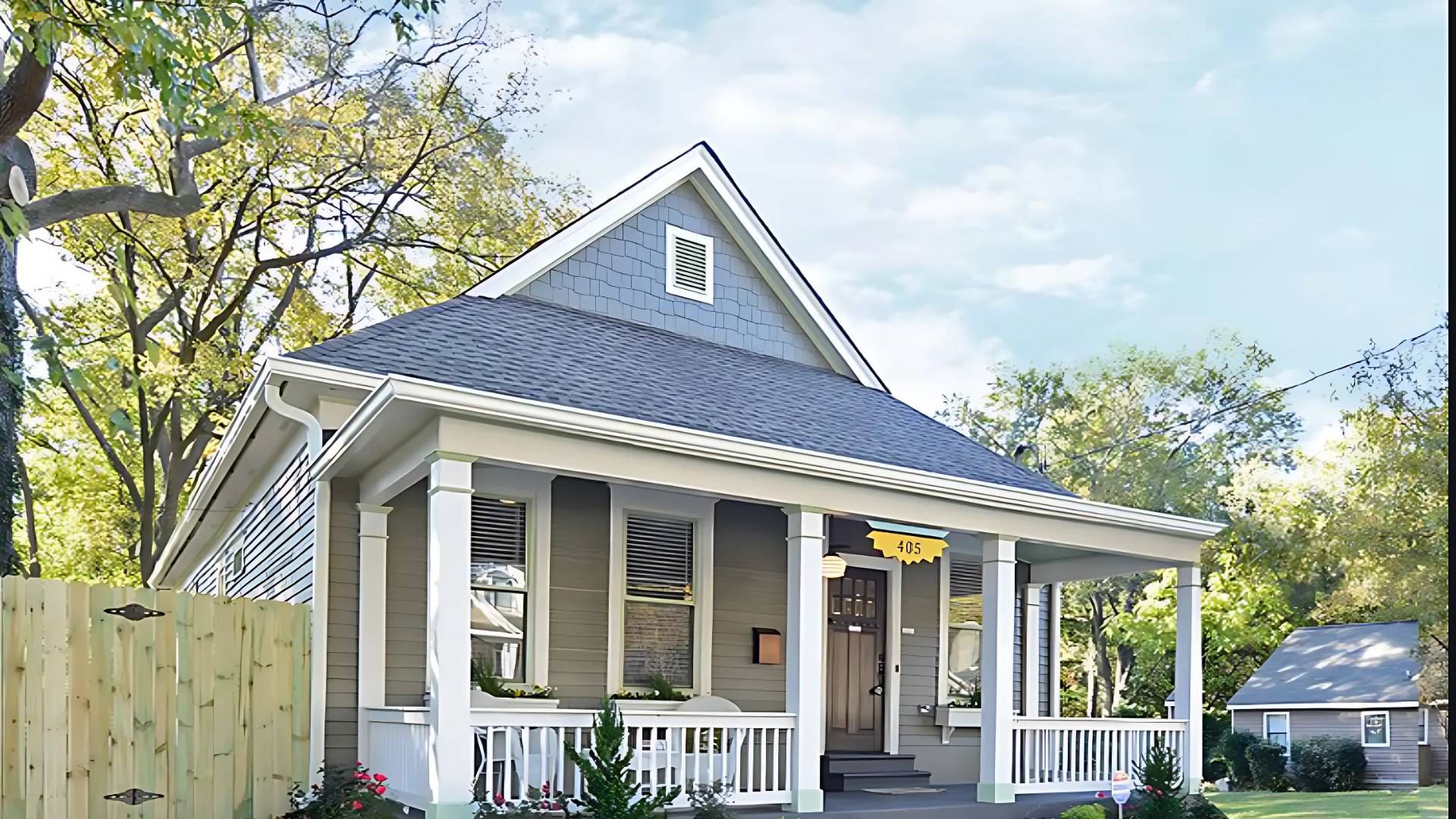
Dutch gable roofs combine hip and gable styles to get the best of both. This hybrid adds a small gable at the top of a hip roof to create more attic space and visual interest.
The mix of styles makes homes look more exciting without the weak points of a pure gable. If you like European-inspired homes but need wind resistance, this style offers a perfect balance.
Mid-century neighborhoods in Virginia, Maryland, and throughout the Mid-Atlantic region feature many elegant homes crowned with these.
10. Hip and Valley Roof
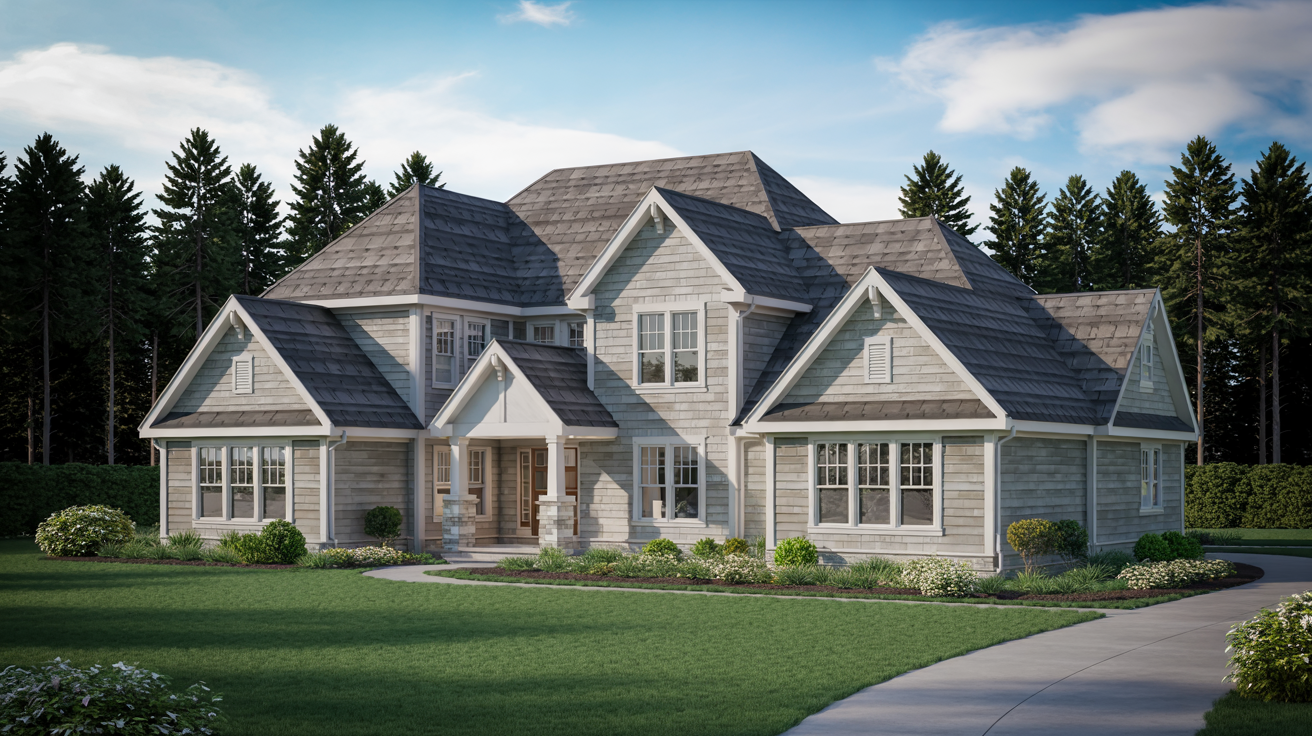
Hip and valley roofs use a hip style with valleys where the roof sections meet at the inside angles. This style handles homes with L-shapes, T-shapes, or multiple wings while maintaining a clean look.
The valleys channel water efficiently but need good flashing to prevent leaks. Large, sprawling homes often use this style to cover complex floor plans with style.
11. Gable and Valley Roof
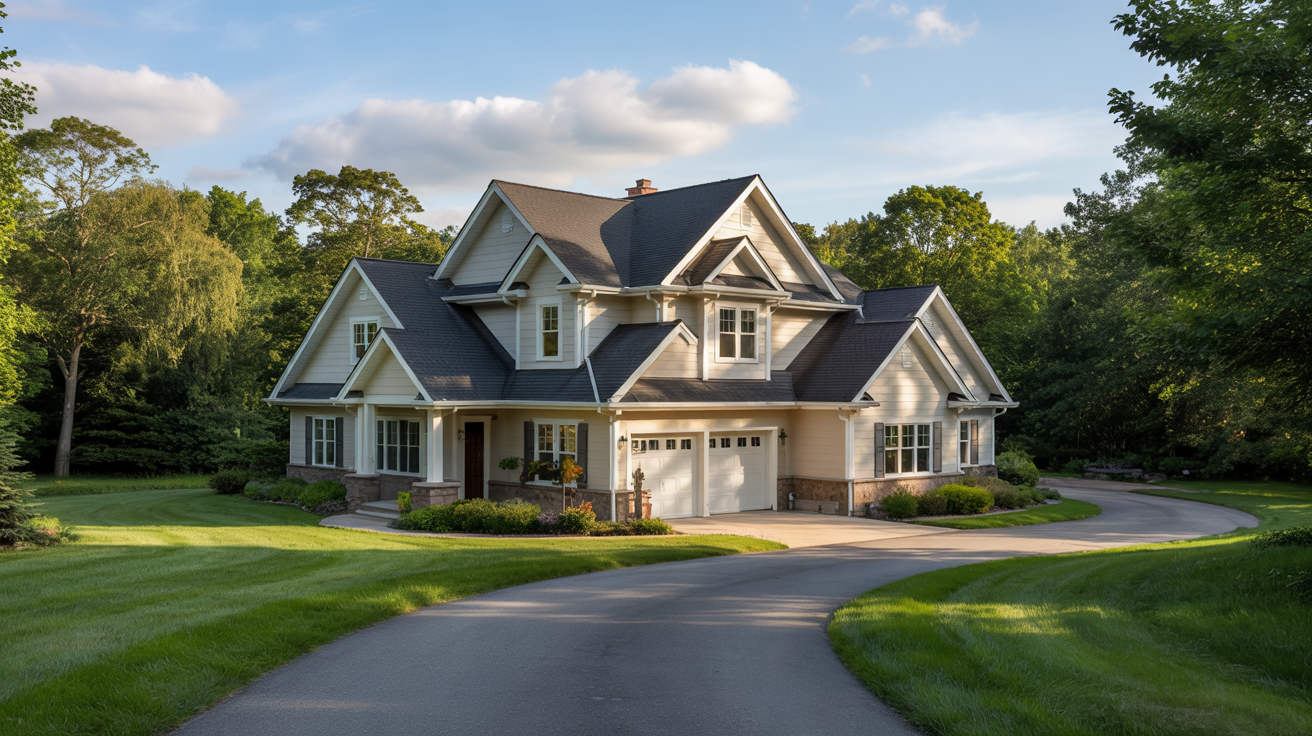
Gable and valley roofs combine multiple gable sections that meet to form valleys. This common style works well for homes with additions or unusual layouts while keeping the traditional gable look.
The valleys must be properly sealed as they can collect leaves and snow over time. Mid-sized custom homes often feature this adaptable roof style.
12. Skillion Roof
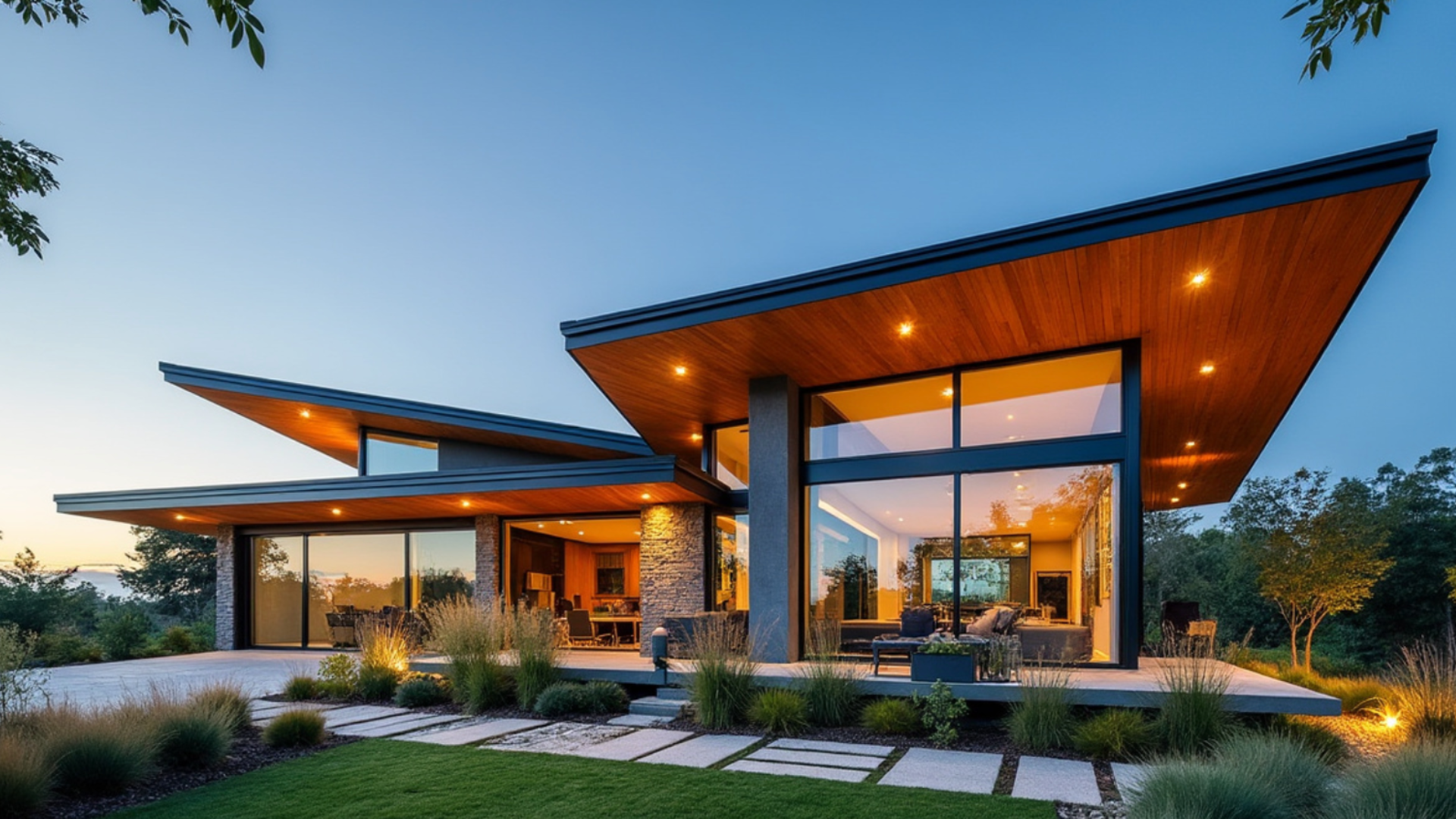
Skillion roofs use a single, steeply-pitched plane attached to a taller wall that slopes down to a shorter wall. Modern homes and tiny houses favor this style for its bold look and simple design.
Inside, the sloped ceiling creates a sense of space and opens up room for clerestory windows. This budget-friendly option offers a distinctive profile without complex construction.
13. Pyramid Hip Roof
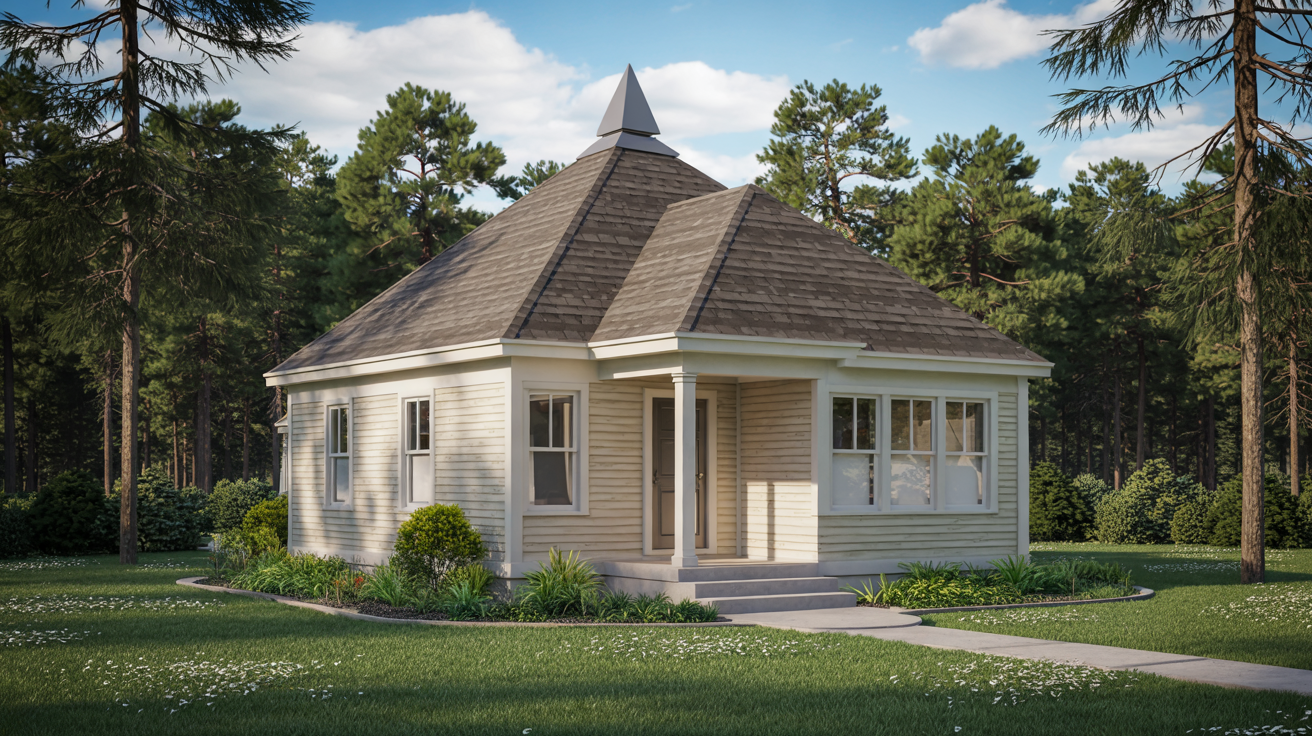
Pyramid hip roofs slope up from all four walls to meet at a point, without a ridge. This style appears most often on smaller square buildings, garden structures, and some bungalows.
The four-sided design stands up extremely well to strong winds from any direction. The symmetrical shape adds a sense of balance and proportion to simple structures.
14. Bonnet Roof
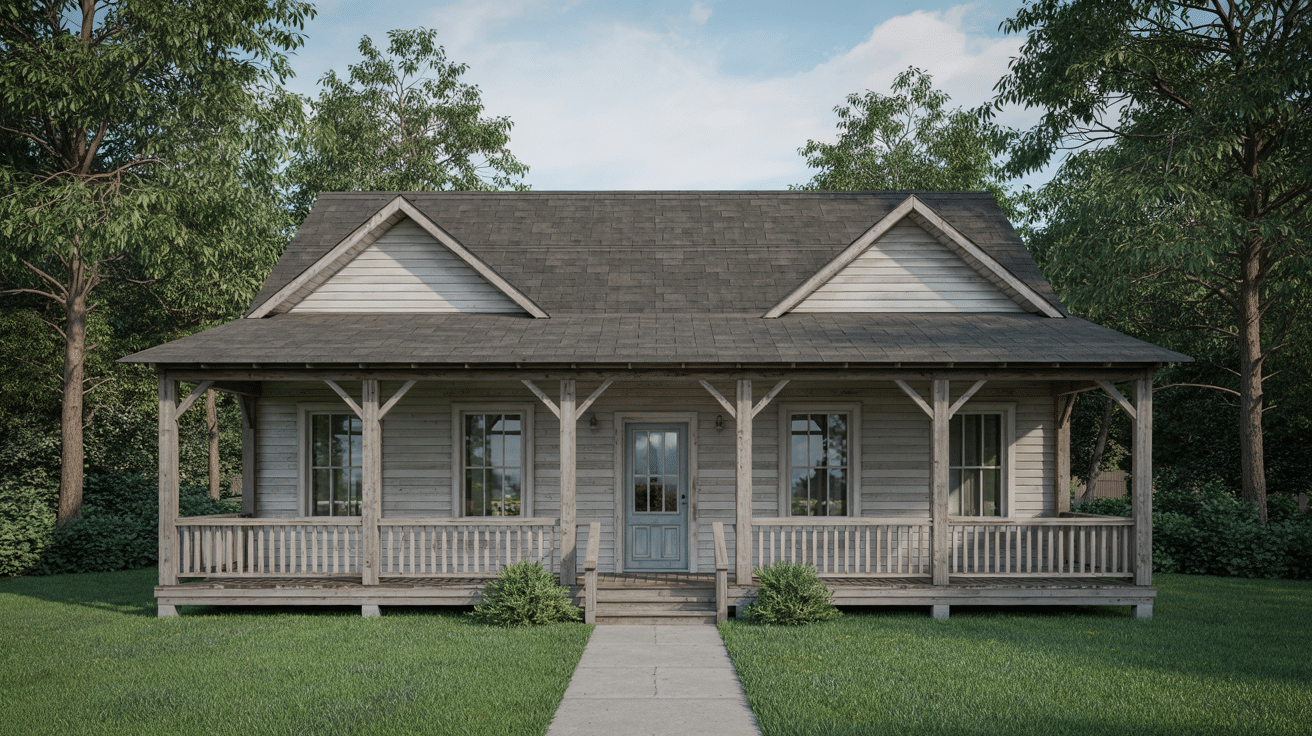
Bonnet roofs feature a hip style with a lower slope that extends beyond the walls to create covered space around the house.
This style emerged in the hot South to provide shade for wrap-around porches and protect walls from rain. The gentle lower slope creates a welcoming look that suits country and traditional homes. Homes in hot, rainy climates benefit most from this practical design.
The rural landscapes of Louisiana, Mississippi, and Alabama still preserve many historic homes with these protective bonnet roofs shading their wide verandas.
15. Butterfly Roof
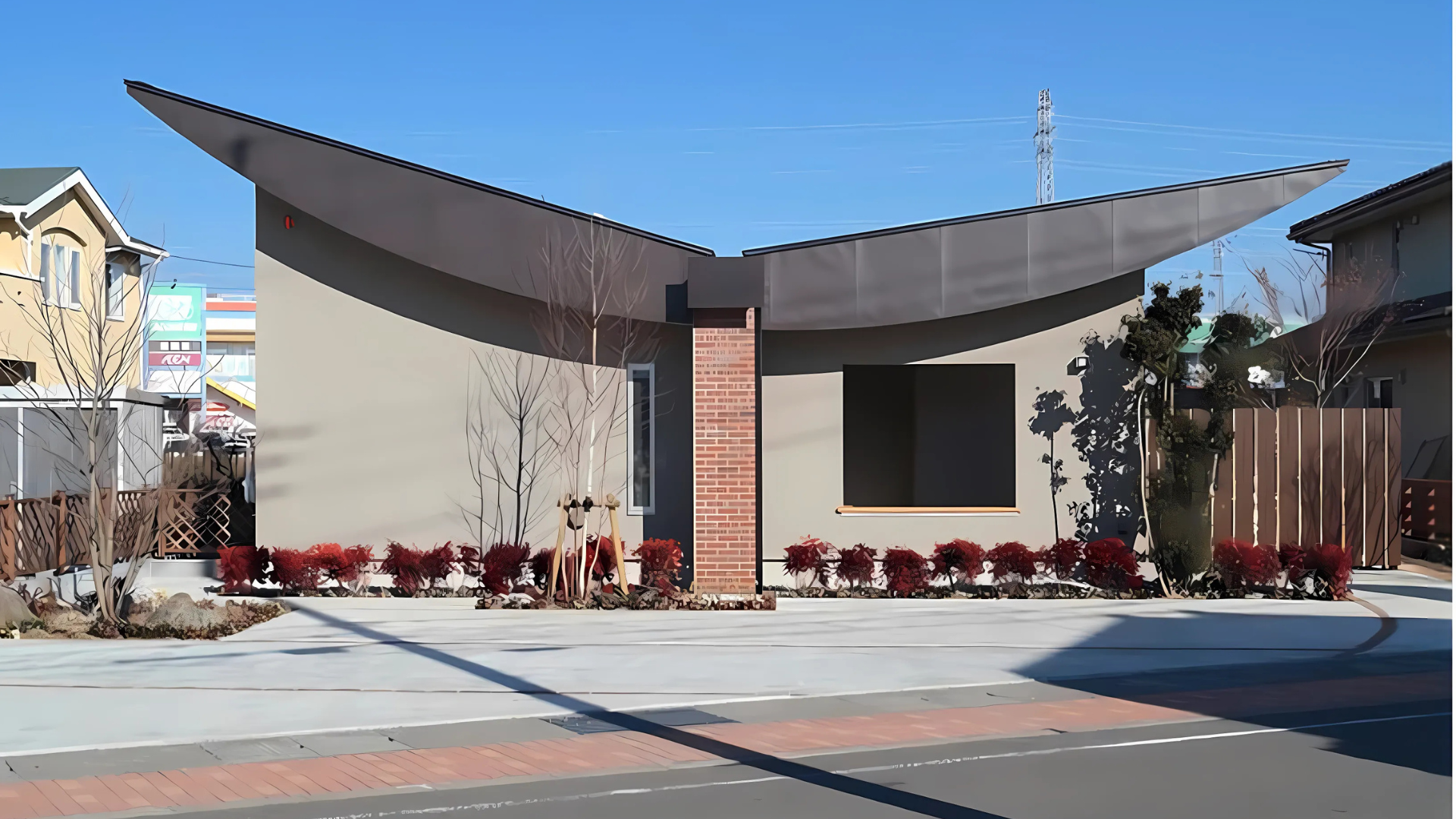
Butterfly roofs have two roof planes that slope downward toward the middle, creating a V-shape. These eye-catching roofs can collect rainwater at the center valley and open up space for large windows at the high ends.
Modern eco-homes use this design to harvest water and increase natural light. The unique shape requires careful waterproofing of the central valley to prevent leaks.
Palm Springs, California, has become the American capital of butterfly roofs, where mid-century modern neighborhoods showcase these distinctive V-shaped profiles against the desert sky
16. Dome Roof
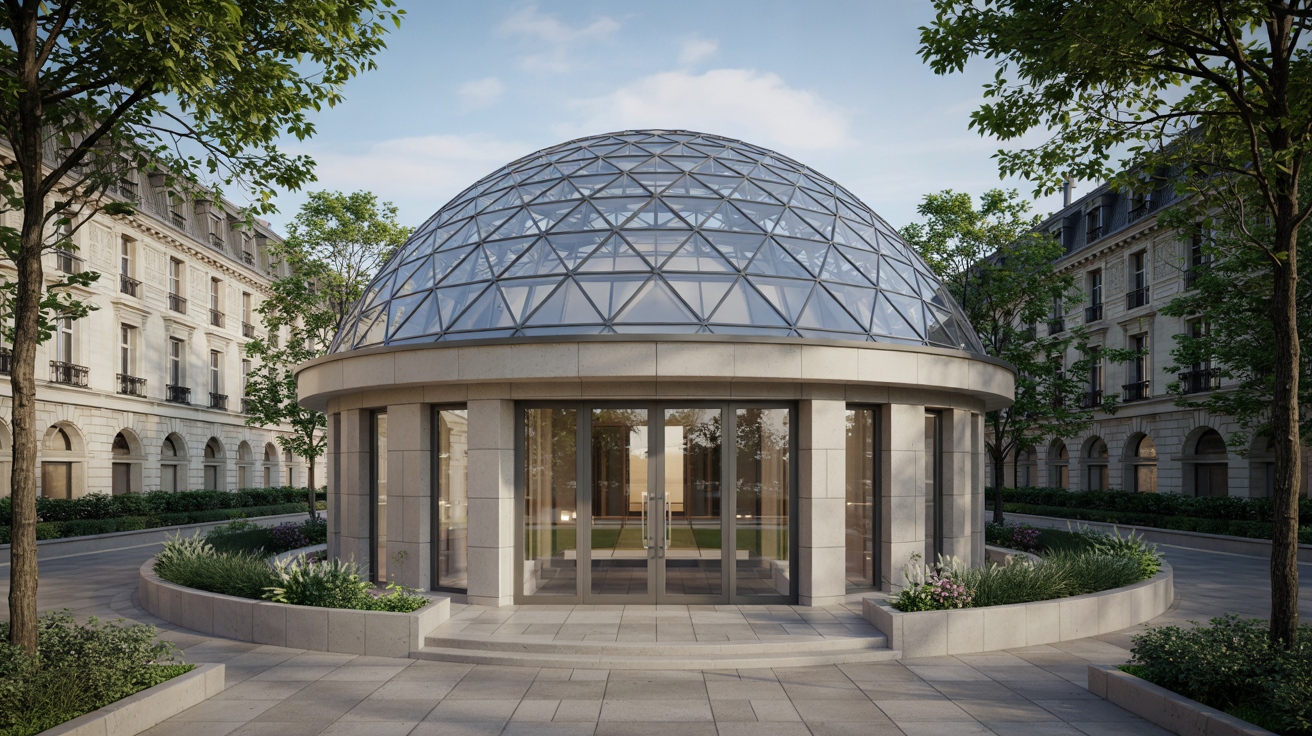
Dome roofs form a perfect half-sphere or oval shape covering the entire structure. This ancient design has made a comeback in eco-friendly homes because of its amazing energy efficiency.
The curved shape handles wind and snow loads better than any other roof style. Though expensive to build, dome roofs can last for generations with minimal maintenance.
17. Clerestory Roof
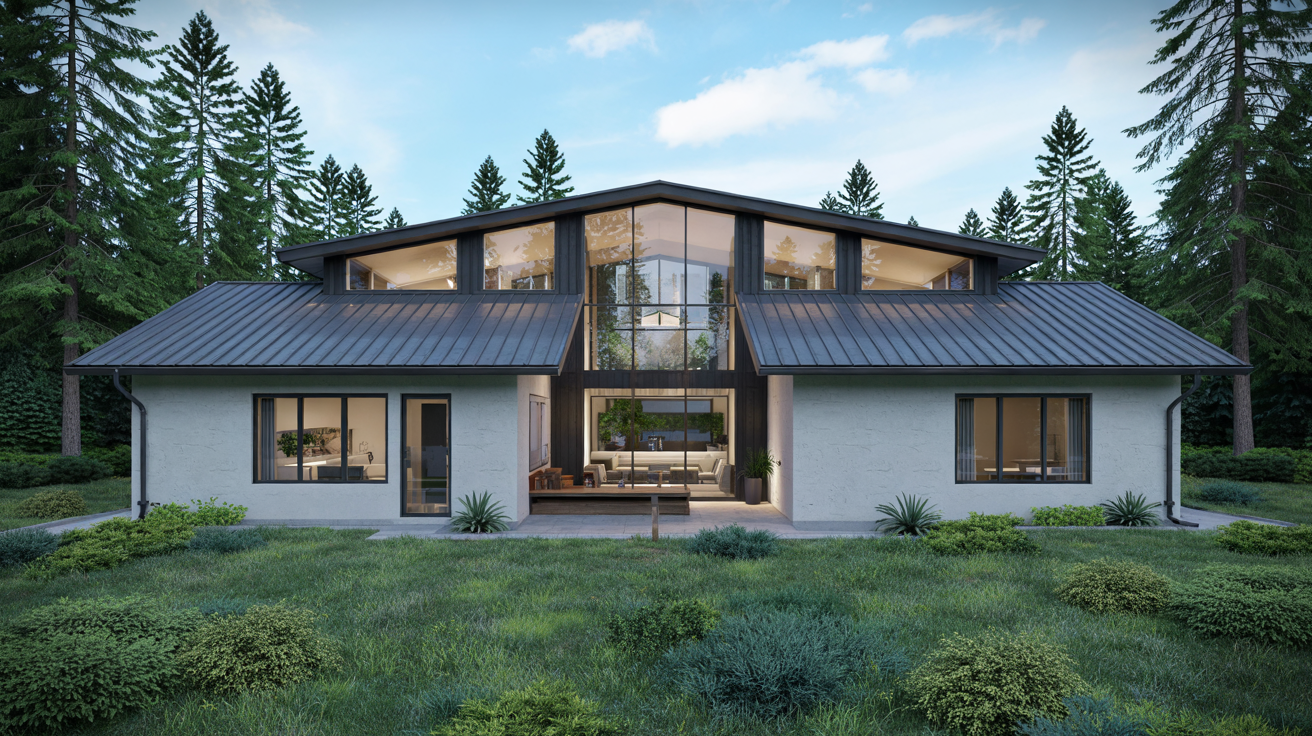
Clerestory roofs use different roof heights with vertical windows inserted in the gap between levels. This clever design brings natural light deep into the home’s interior spaces.
The higher sections often face south in northern climates to capture winter sun for passive heating. Homes designed for energy efficiency and natural lighting frequently use this practical style.
18. Green Roof
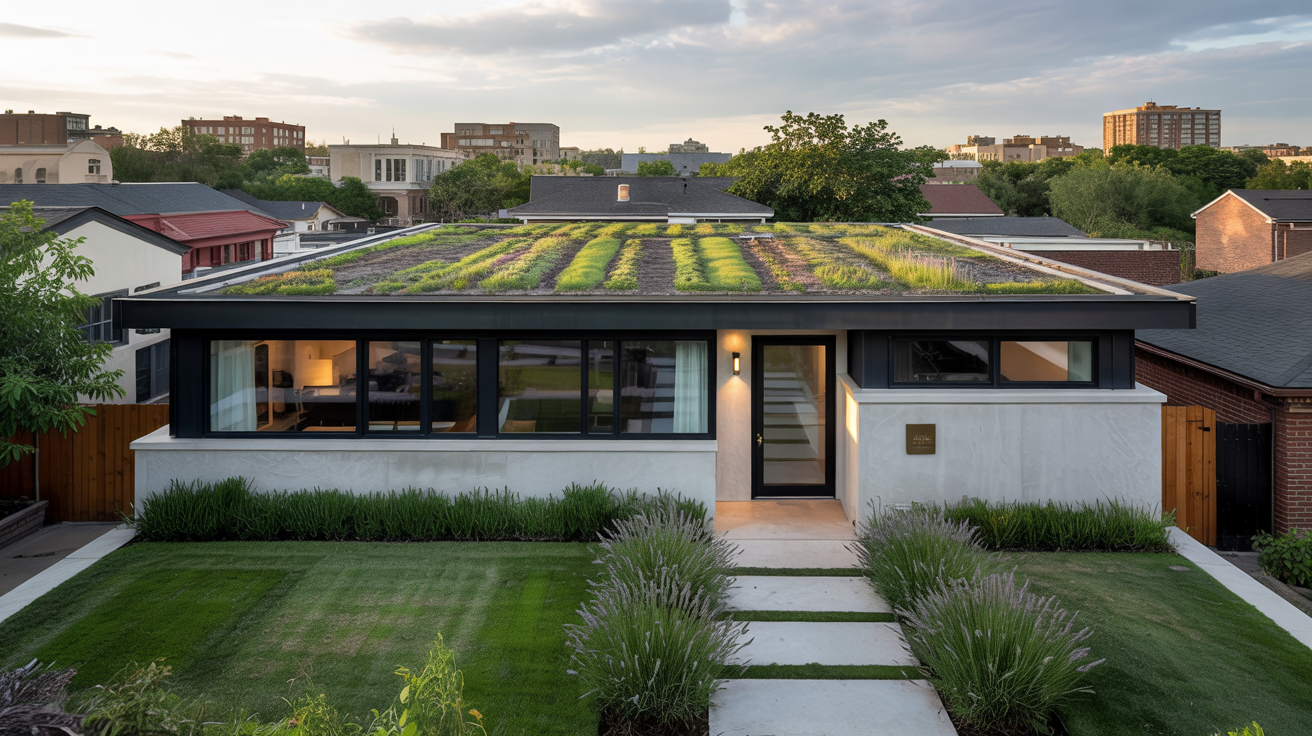
Green roofs cover the surface with living plants grown in a special medium over a waterproof layer. These living roofs cool buildings naturally, absorb rainwater, and create habitat for birds and insects.
Though they weigh more and cost more initially, they can extend roof life and cut energy bills. Urban homes and eco-conscious homeowners choose this style for its environmental benefits.
19. Curved Roof
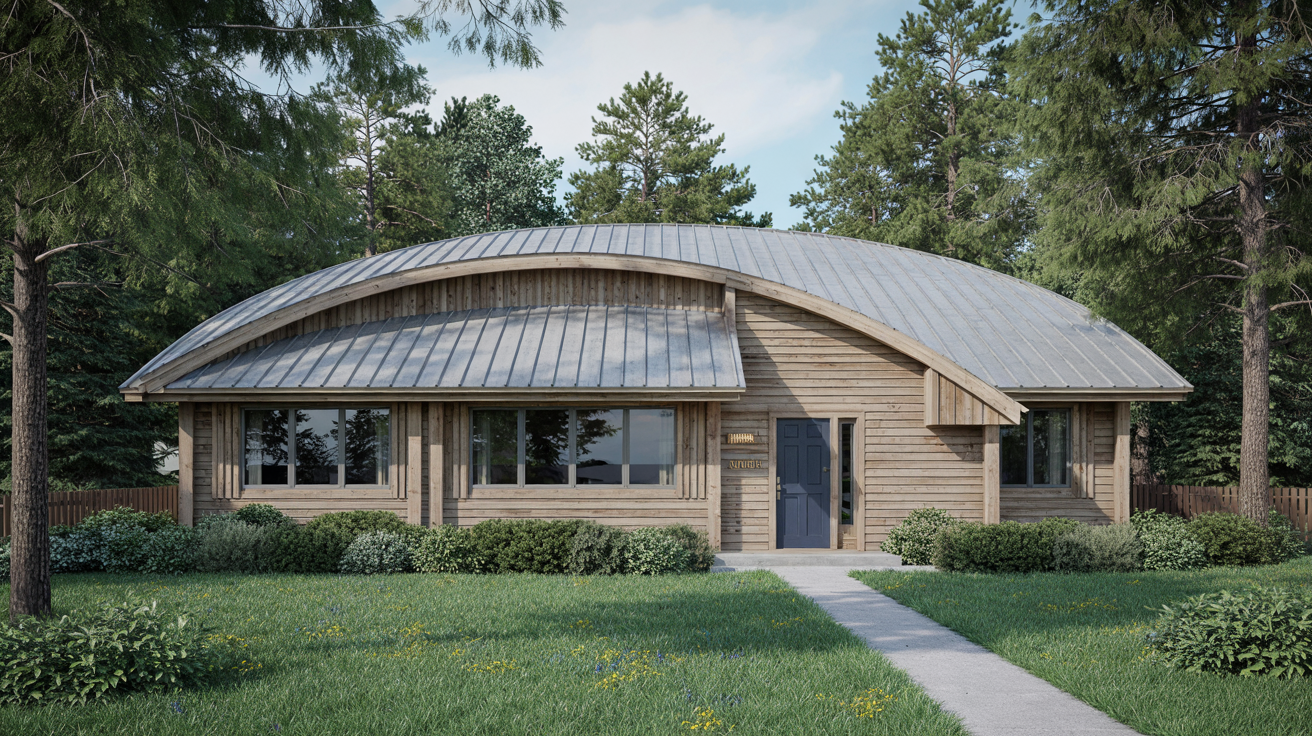
Curved roofs form a gentle arc rather than straight planes. This flowing style creates dramatic interior spaces and handles wind resistance with its aerodynamic shape.
Modern architect-designed homes often feature this distinctive look to stand out from traditional houses. The curved structure requires special materials and skilled builders, making it a premium option.
20. Arched Roof
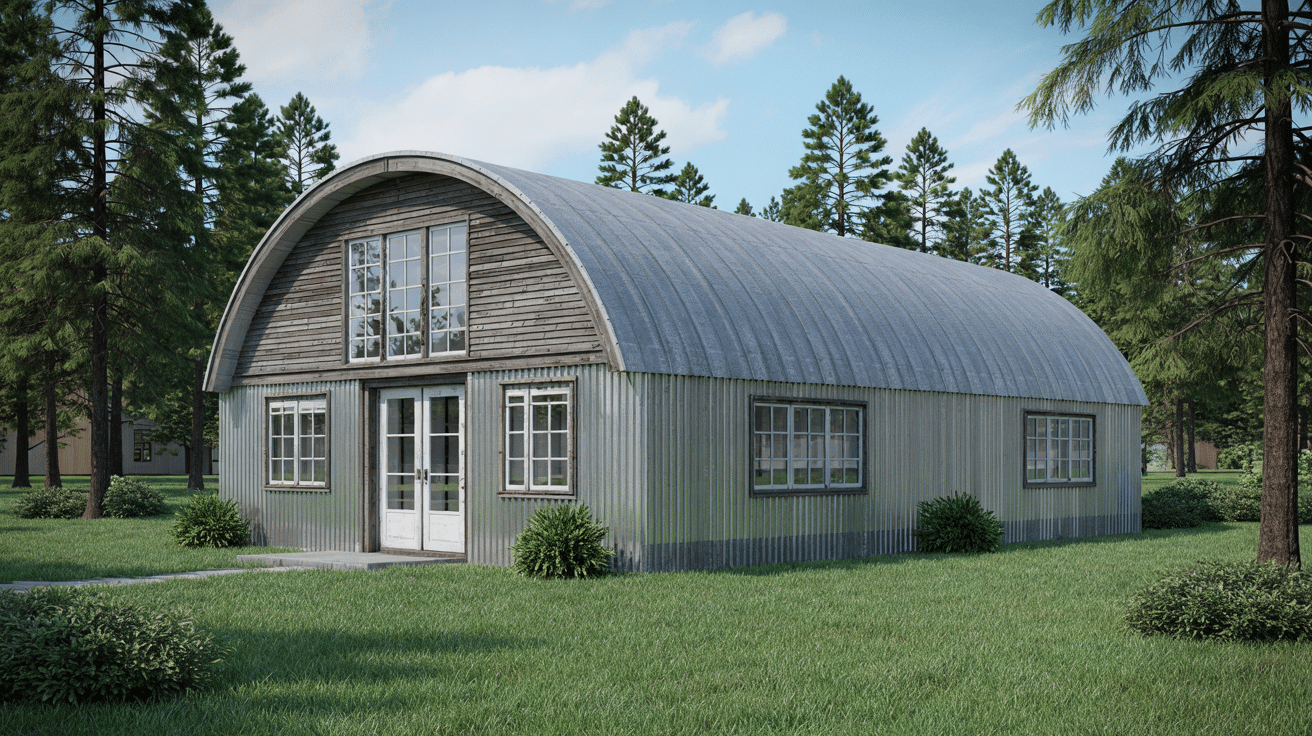
Arched roofs form a perfect semi-circle from one side of the building to the other. This style spans large open spaces without middle supports, making it perfect for barns and modern open-concept homes.
The arch shape naturally transfers weight to the side walls for amazing strength. Buildings needing large, unobstructed interior spaces benefit most from this efficient design.
Wisconsin dairy country and the agricultural heartland of America feature countless arched-roof barns and equipment shelters where this practical design creates maximum usable space.
21. Sawtooth Roof
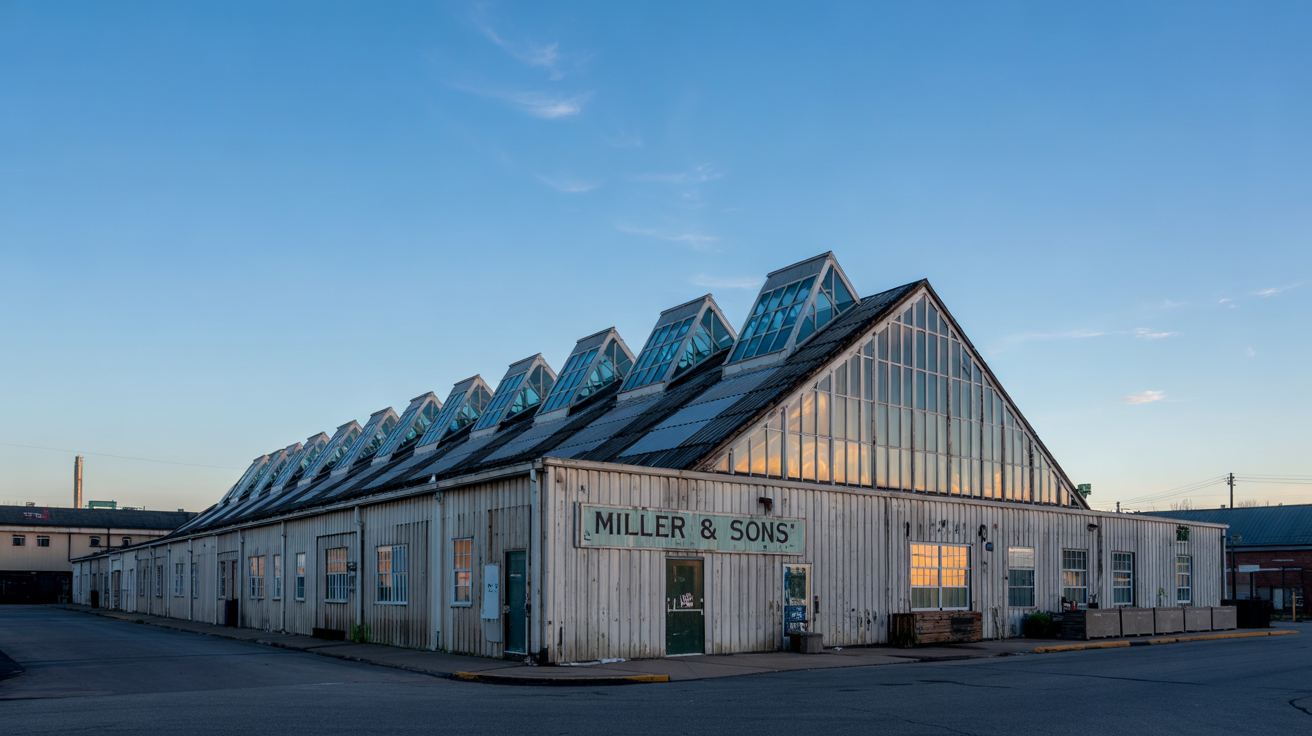
Sawtooth roofs have a series of ridges with vertical glass on one side, resembling the teeth of a saw. This design brings controlled natural light into large spaces like studios and workshops.
The vertical glass panels often face north to provide even light without direct sun glare. Creative spaces and buildings that need consistent natural light work well with this industrial-inspired style.
22. M-Shaped Roof
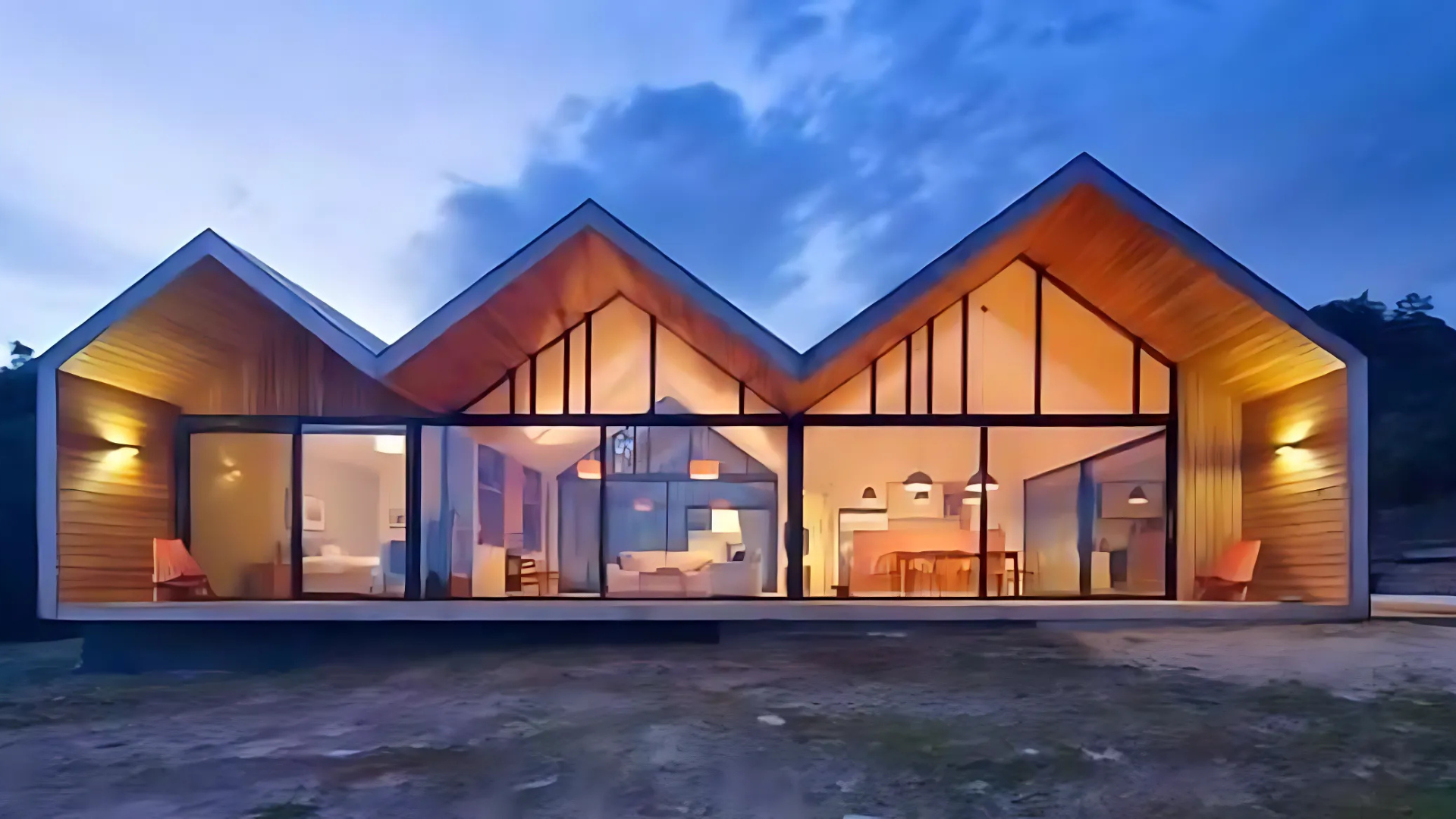
M-shaped roofs combine two gable roofs side by side with a valley in the middle. This distinctive style creates dramatic high ceilings and works well for wide buildings.
The center valley must have excellent drainage systems to handle heavy rain or snow. Luxury modern homes use this bold profile to make a statement in upscale neighborhoods.
23. Folded Plate Roof
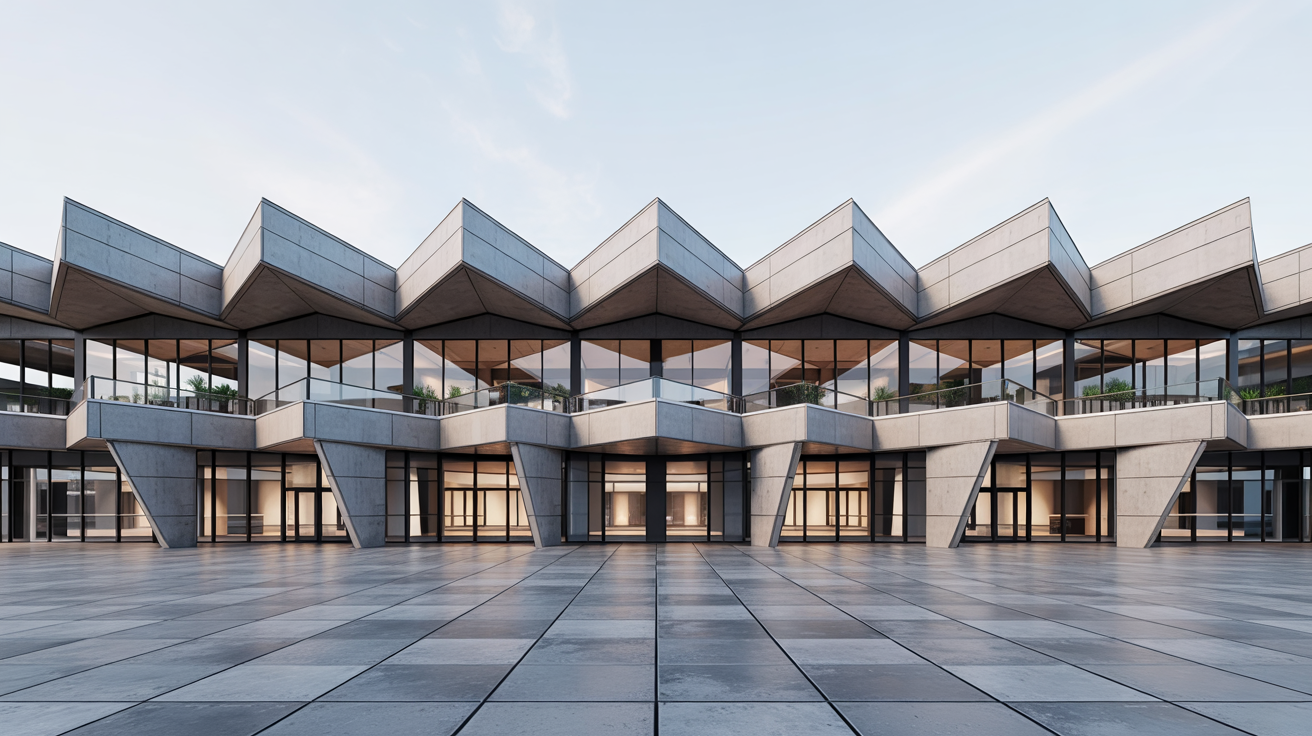
Folded plate roofs use a series of thin, sloped planes connected at angles to create strength. This engineering-inspired design can cover wide areas without heavy support beams underneath.
The angled surfaces create an interesting play of light and shadow both outside and inside. Art galleries and high-end architectural homes often showcase this sophisticated roof style.
24. Inverted Gable Roof
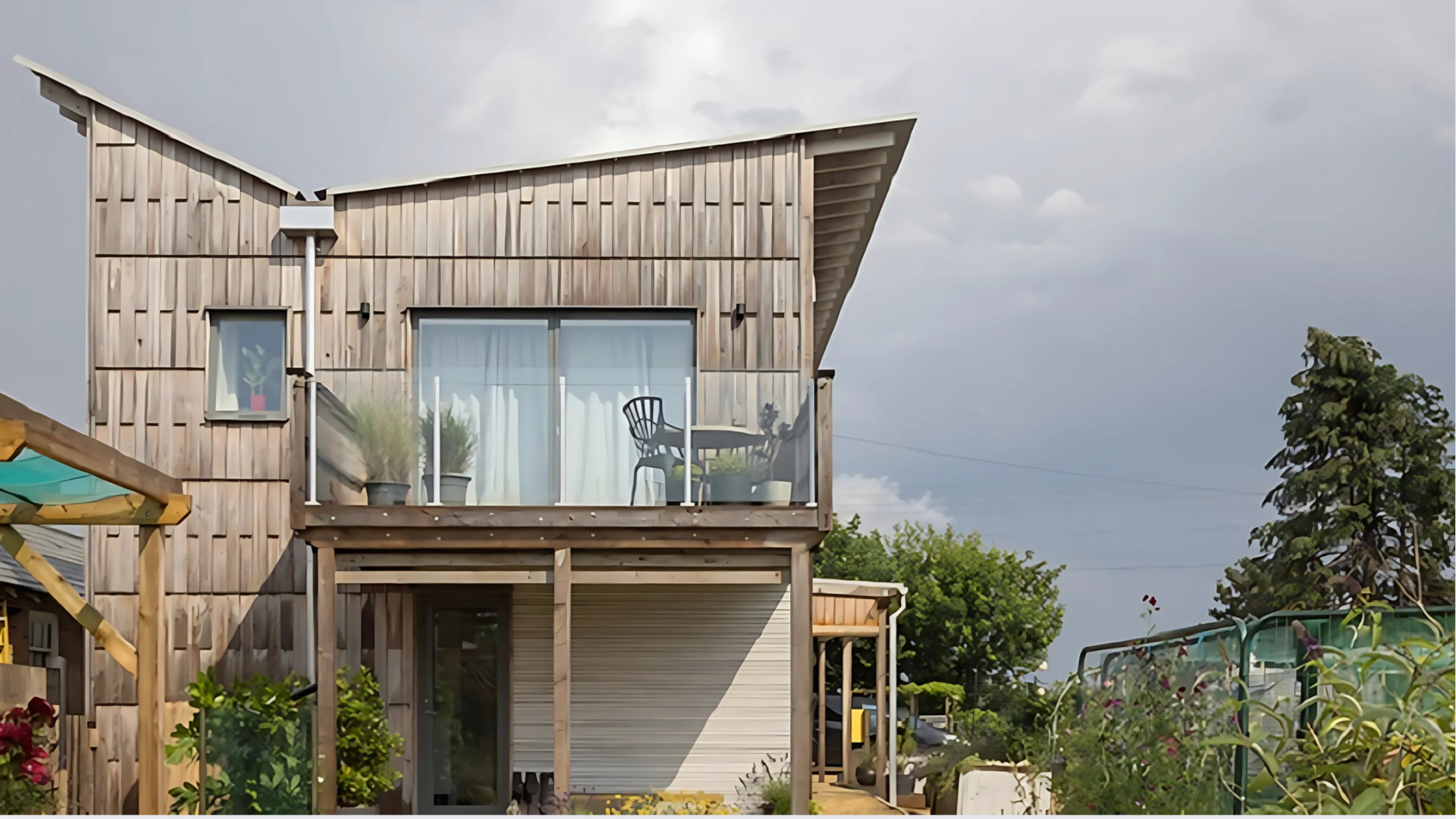
Inverted gable roofs turn the traditional gable upside-down, with slopes that slope inward rather than outward. This unique look creates an attention-grabbing silhouette unlike anything else in the neighborhood.
The center valley requires careful waterproofing and drainage design to prevent problems. Forward-thinking homeowners choose this style when they want their house to stand out.
25. Flat and Gable Combo Roof
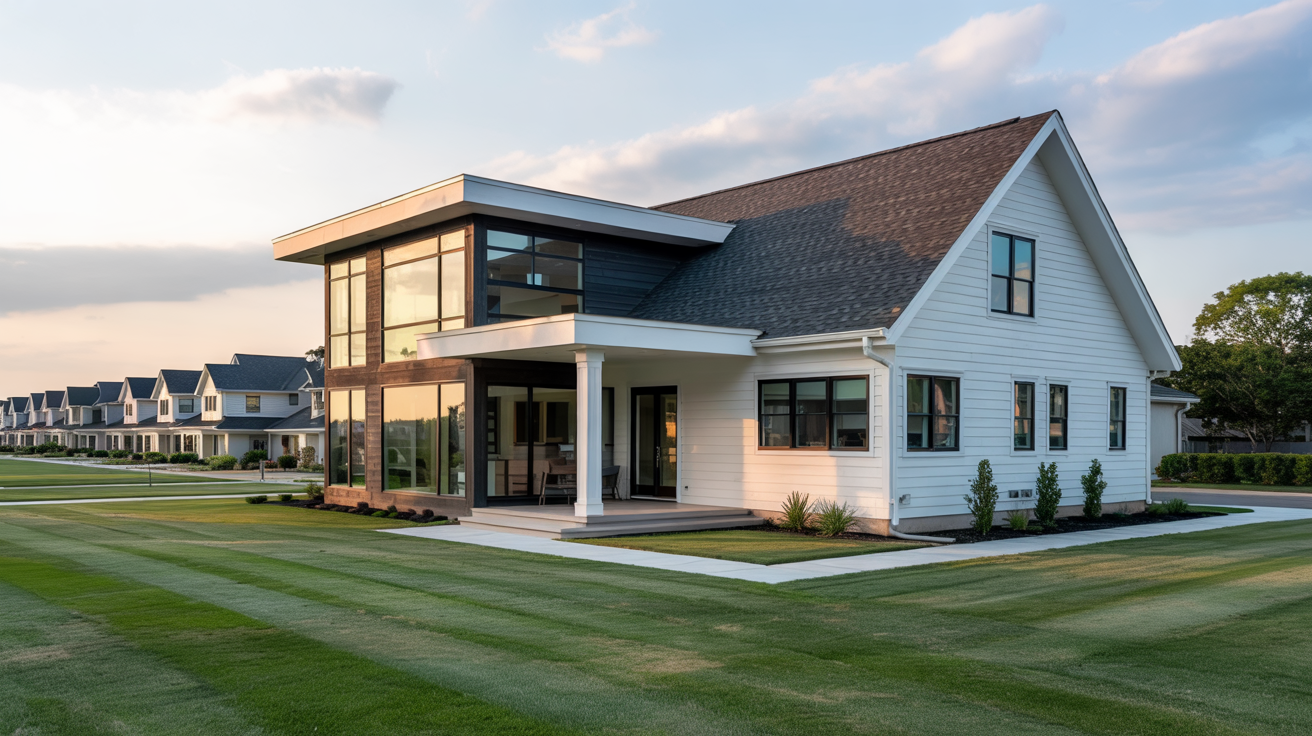
This style pairs flat roof sections with angled gable portions for a mixed modern look. The combination allows for rooftop living spaces while ensuring good drainage from the sloped sections.
Many sustainable home designs use this practical blend to maximize space use. The varied roof heights can also create space for high windows to bring light into central rooms.
26. Conical Roof
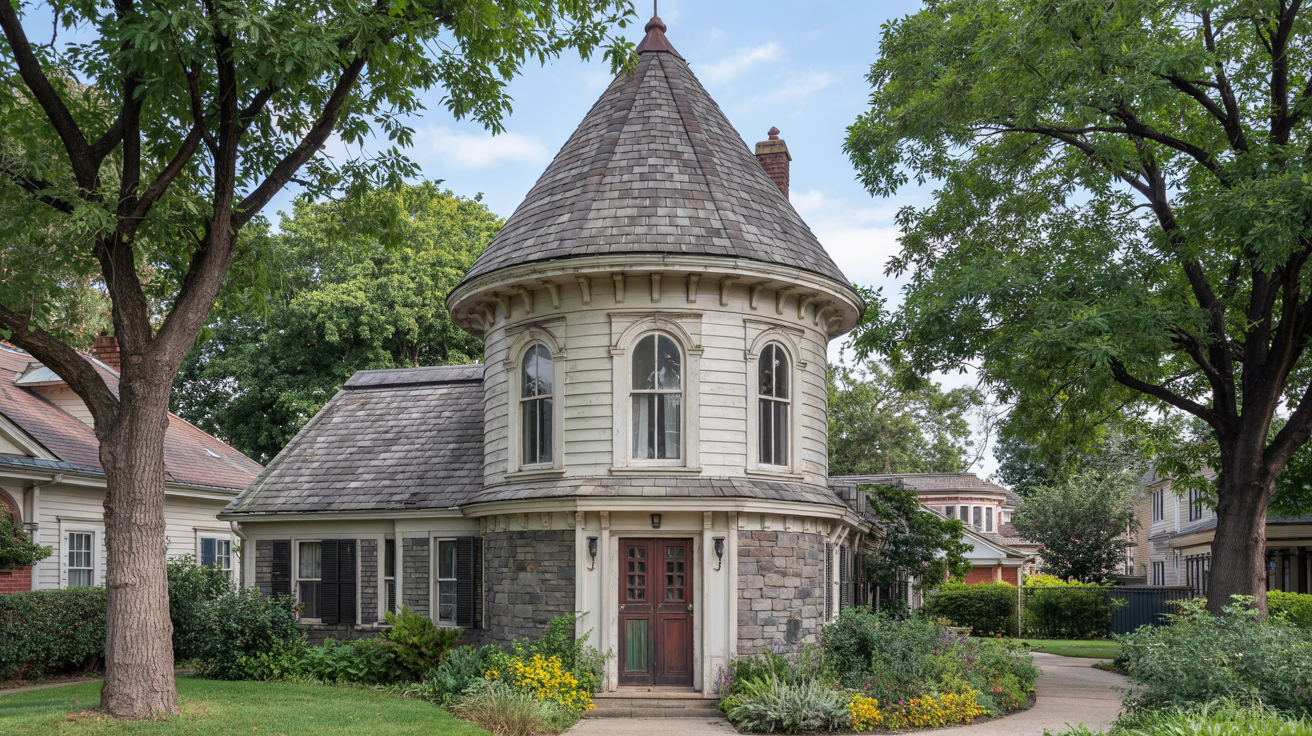
Conical roofs form a perfect cone shape, narrowing from a circular base to a point at the top. You’ll spot these roofs on round turrets of Victorian homes and castle-inspired houses.
The cone shape sheds water perfectly in all directions and resists wind from any angle. This specialty roof adds vertical drama and old-world charm to special areas of the home.
27. Hexagonal Gazebo Roof
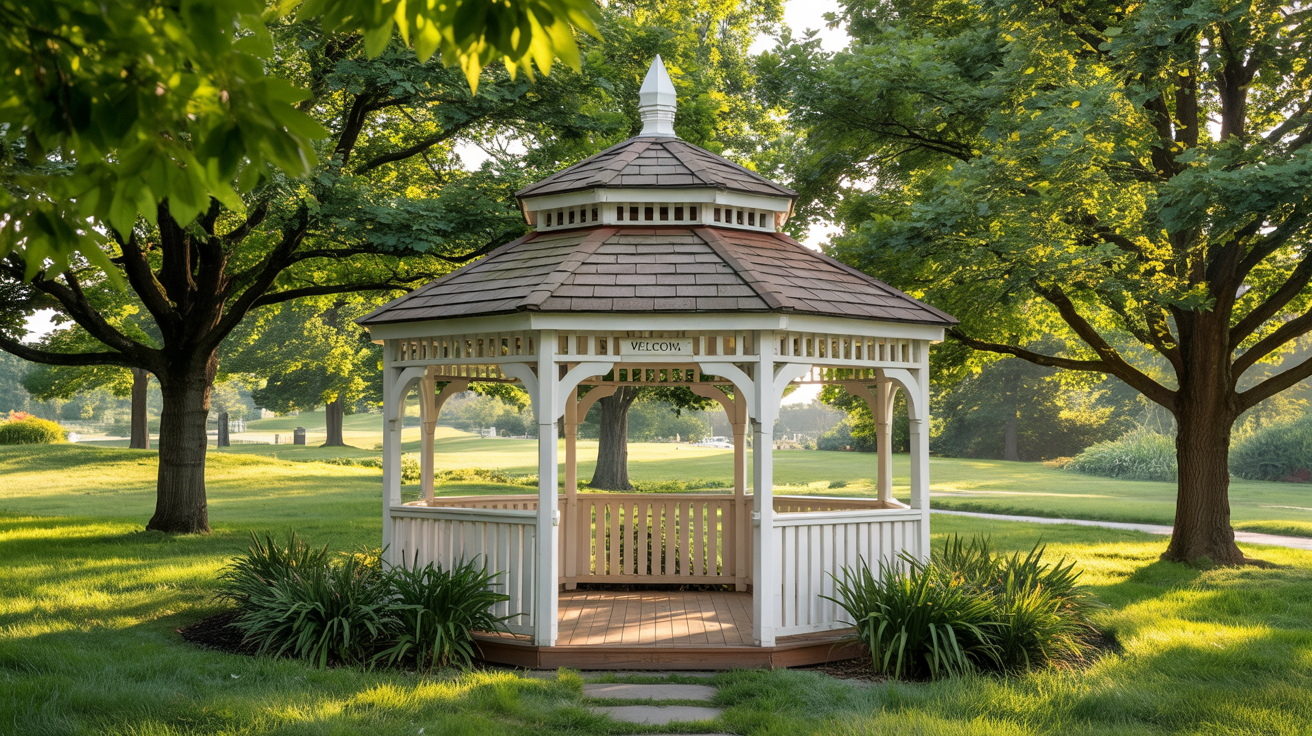
Hexagonal gazebo roofs have six triangular faces that rise from a six-sided base to meet at a single point. This special roof style appears most often on garden structures and outdoor living spaces.
The multi-sided design provides excellent stability and a classic, refined appearance. While rarely used for main homes, this style adds character to landscape features and outdoor rooms.
28. Louvered Roof
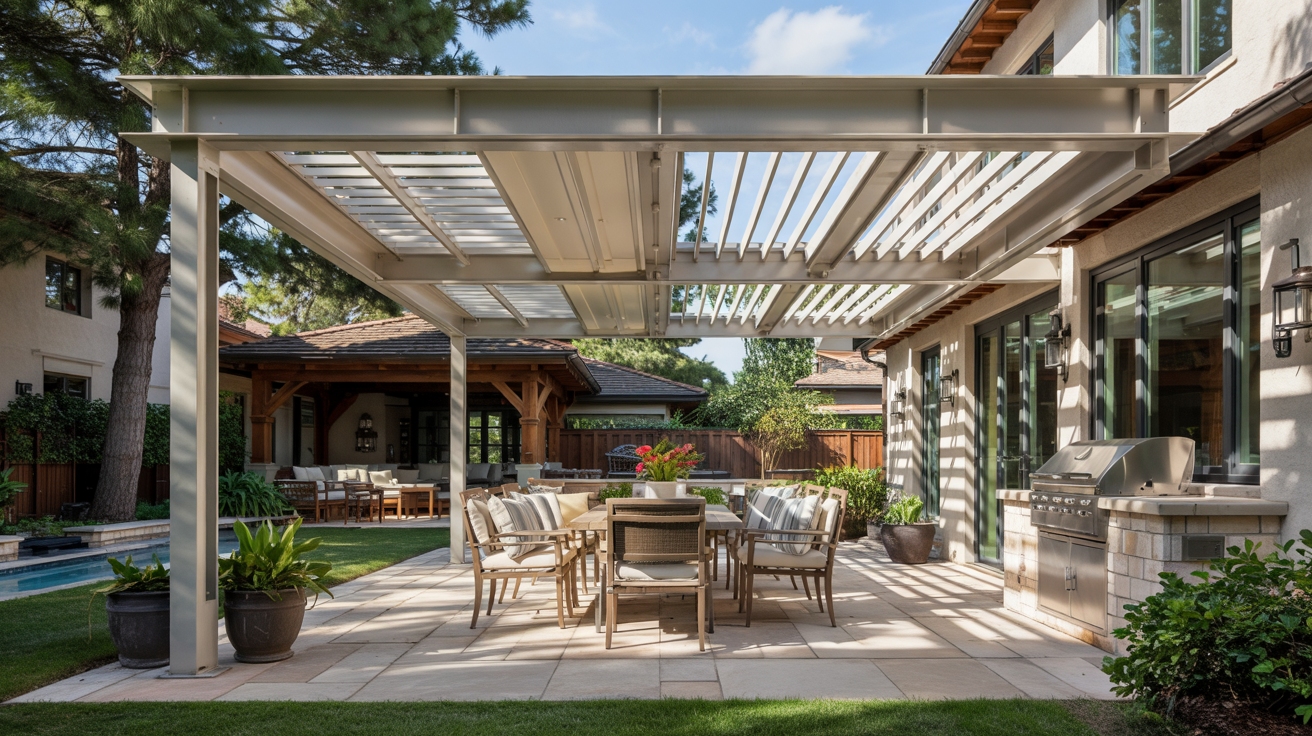
Louvered roofs feature adjustable slats that can open or close depending on weather conditions. This versatile style is perfect for patios, verandas, and outdoor living areas that need weather flexibility.
The movable parts allow you to enjoy outdoor spaces in various weather conditions throughout the year. Tech-savvy homeowners often choose this adaptable solution for their outdoor entertainment spaces.
29. Butterfly and Shed Combo
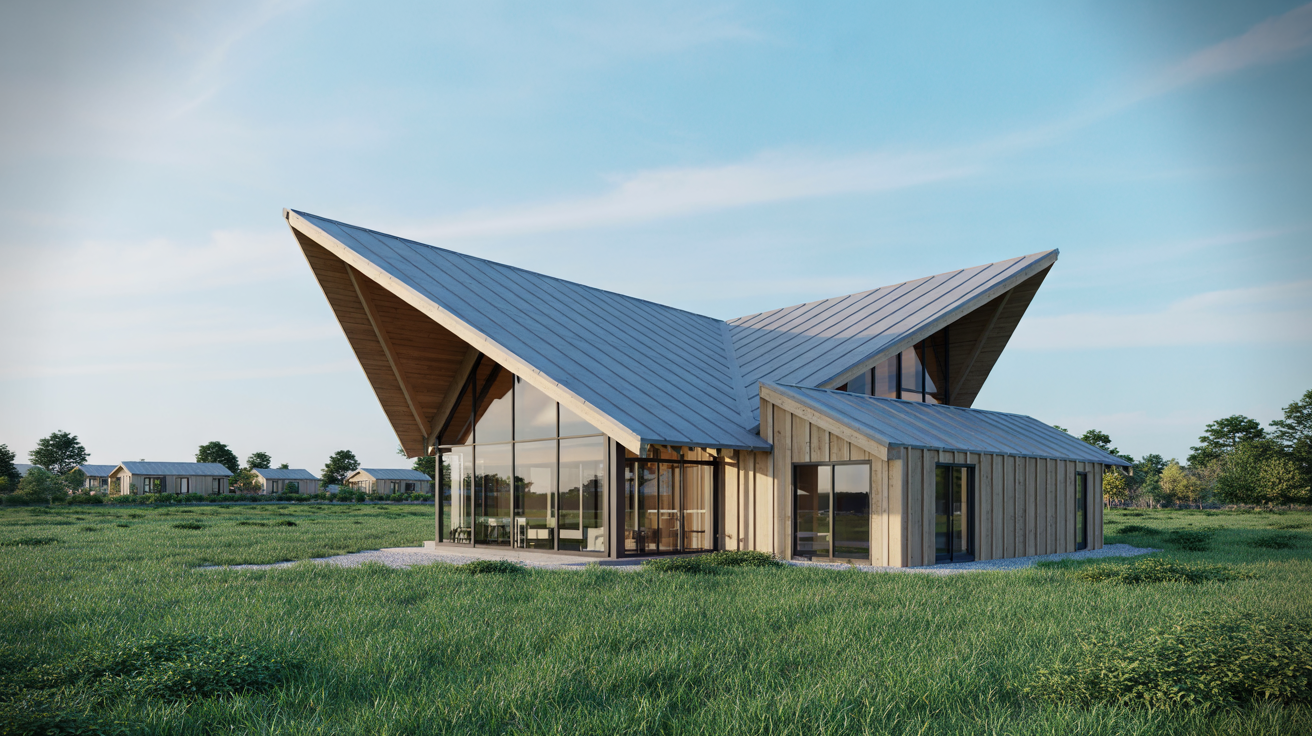
This hybrid mixes the V-shape of butterfly roofs with shed roof sections for a complex modern profile.
The design collects rainwater while allowing for creative window placement and interior spaces.
High-end eco-homes often feature this distinctive combination of practical elements. This forward-looking style appeals to environmentally conscious homeowners who want their home to stand out.
30. Conical Tower Roof
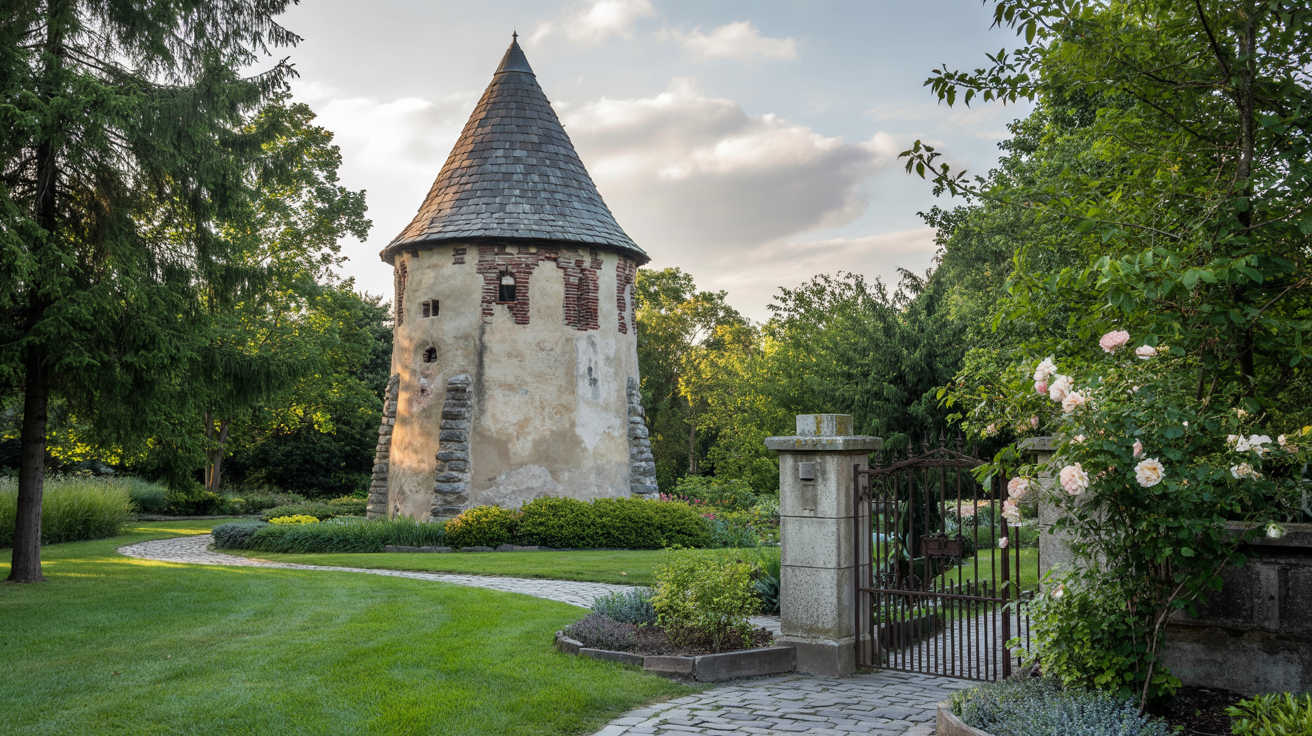
Conical tower roofs top round or octagonal tower features with a dramatic pointed cone. This fairy-tale element adds height and visual interest to luxury homes and historic-inspired designs.
The steep slope sheds snow and rain perfectly while creating usable space inside the tower. Homes aiming for romantic or historical character often include this special feature as a focal point.
How to Choose the Right Roof Style for Your Home
Still not sure which roof is right for you? Here’s a simple guide to help you pick the best roof style for your needs.
Climate and Weather Considerations
- For snow and rain protection: Pick steep roofs like gable or hip in snowy or rainy areas
- For dry climates: Flat roofs work better where rainfall is minimal
- For hurricane-prone areas: Homes do best with hip or curved roofs that resist high winds
Home Design and Architecture
- For colonial homes: These pair well with gambrel or saltbox roofs
- For modern homes: Look for flat, shed, or butterfly roofs
- For traditional suburban homes: Gable or hip roofs offer classic appeal
- For large homes: These may need combo roofs for the best look
- For small homes: Simple gable roofs often create the most balanced appearance
- For oddly-shaped homes: Custom roof solutions might be necessary
Budget and Materials
Up-front Cost:
- Gable and shed roofs cost less to build
- Complex designs like mansard and dome roofs cost more
- Flat roofs are often cheaper but may need more care
Long-term Value:
- Hip roofs may cost more but last longer in storm-prone areas
- Quality materials might cost more now but save money later
- Some roof types (like flat) need more regular checks and fixes
Maintenance Needs
Roof Life:
- Simple roofs like gable are easier to fix
- Flat roofs need more regular checks for leaks
- Complex designs mean more spots where problems can happen
Cleaning and Upkeep:
- Steep roofs shed leaves and debris better
- Low-slope roofs are safer to walk on for cleaning
- Some designs collect more leaves in valleys and corners
What Roofing Materials Pair Best with Each Style?
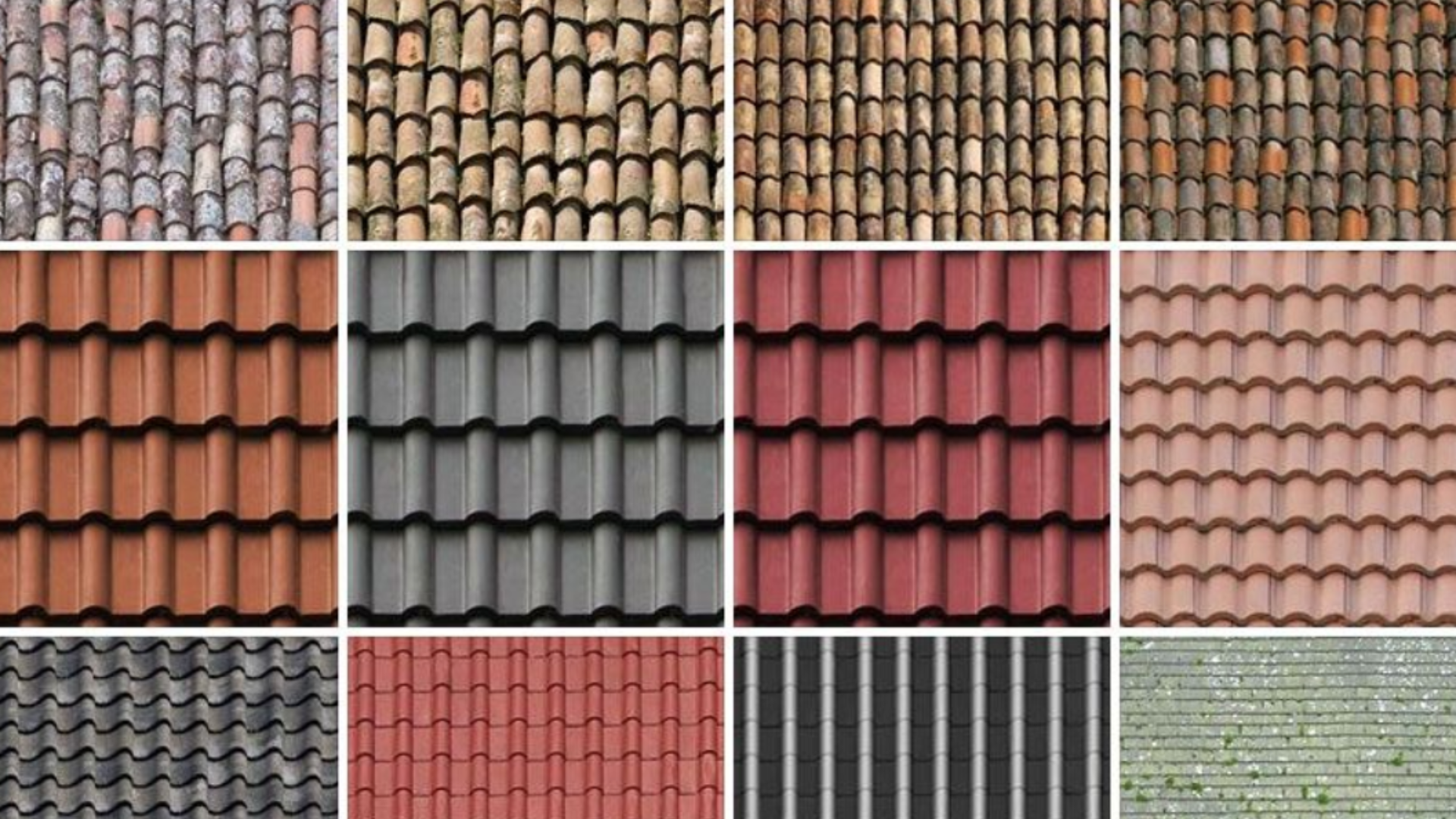
Picking the right material matters just as much as the roof style you choose. Here’s a simple guide to pairing materials with styles for the perfect mix of looks, long life, and everyday use.
|
Roof Style |
Best Matching Materials |
Why It Works |
|
Gable Roof |
Asphalt shingles, Metal, Tile |
A simple shape works well with many materials. |
|
Hip Roof |
Asphalt shingles, Metal, Clay tile |
Needs strong, heavy materials for stability. |
|
Flat Roof |
Rubber membrane (EPDM), TPO, Green roof |
Best for keeping water out and eco-friendly options. |
|
Shed Roof |
Metal, Asphalt shingles, Solar panels |
Single slope works well with light materials. |
|
Mansard Roof |
Slate, Metal, Wood shingles |
Heavy, classic materials match French style. |
|
Gambrel Roof |
Wood shingles, Asphalt shingles, Metal |
Light materials work well with steep slopes. |
|
Saltbox Roof |
Asphalt shingles, Wood shakes, Metal |
Off-balance design needs easy-to-work-with materials. |
|
Combination Roof |
Mixed materials (Metal + Asphalt + Slate) |
Different styles allow for a mix of materials. |
|
Bonnet Roof |
Asphalt shingles, Metal, Tile |
Long-lasting materials to guard porches. |
|
Butterfly Roof |
Metal, Rubber membrane (EPDM), Solar panels |
V-shape needs water-tight and modern options. |
|
Curved Roof |
Metal (especially standing seam), Rubber |
Bendy materials that can curve or shape to fit. |
|
Dome Roof |
Metal sheets, Concrete, Rubber membrane |
Needs custom, shapeable, and water-proof layers. |
Roof Styles That Add Home Value
The right roof style can boost curb appeal, improve energy efficiency, and increase your home’s overall value.
Safe Bets:
- Gable and hip roofs appeal to most buyers
- Classic styles match most neighborhoods
- Practical designs with good curb appeal sell better
Eye-Catching Options:
- Unique styles like butterfly can make your home stand out
- Mansard roofs add extra space buyers might pay more for
- Solar-ready designs (shed, butterfly) appeal to green-minded buyers
First Impressions:
- The roof makes up to 40% of what people see from the street
- Clean lines and good condition matter more than fancy styles
- A good roof-to-house size ratio keeps your home looking balanced
Wrap-Up: The Roof that Fits You Best
Your roof does much more than keep rain out – it shapes your home’s look, impacts your energy bills, and affects your home’s value. We hope this guide helps you pick the perfect top for your house!
Remember to consider your local weather, your home’s style, your budget, and how much care you’re willing to do when choosing your roof.
Still not sure which style works best for your home? Talk to a local roofing expert who knows what holds up well in your area.
What roof style catches your eye? Do you have questions about a specific type that would work for your home? Share in the comments below – we’d love to hear which style you’re leaning toward!


